
Welcome!
Thanks for coming along
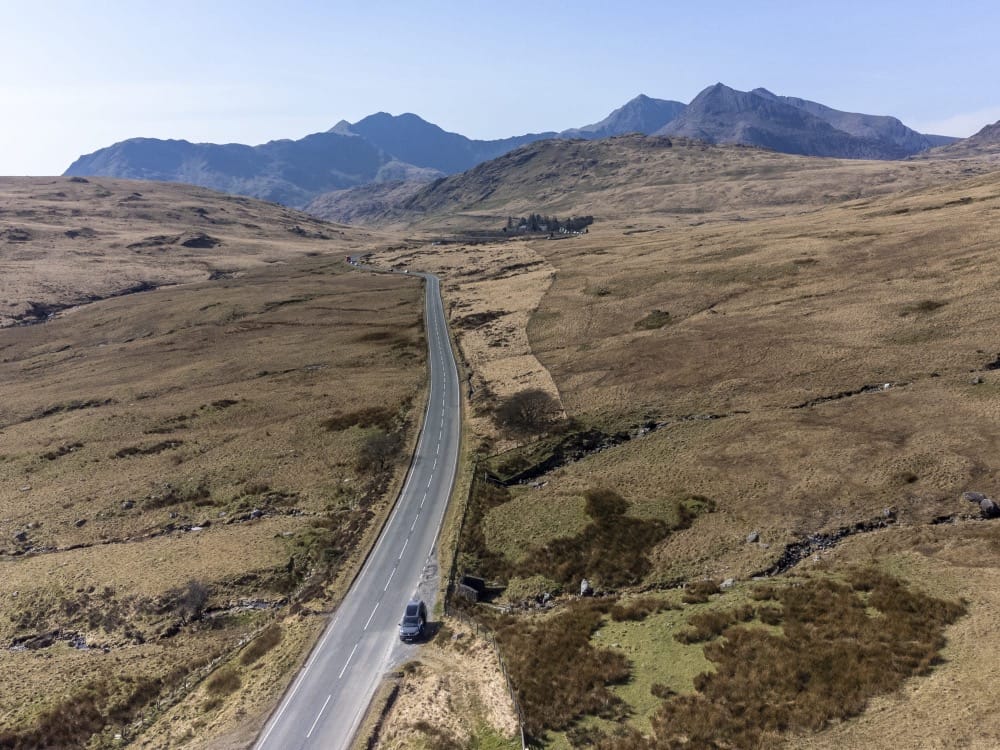
⚡️ View the latest digest and the full archive here.
📐 My Goals ℹ️ Donations Page & Status 📸 MPP Status 🛍️Shop
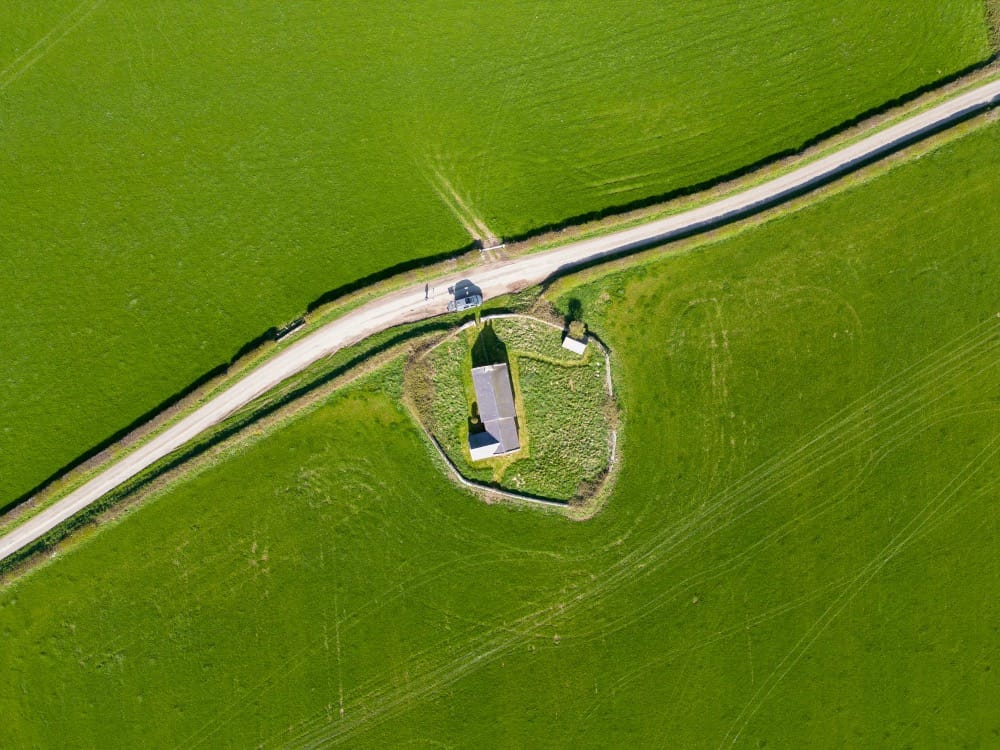
This Digest is free to subscribers and is powered by 153 Members
7 more members will enable another free photo shoot
Help Support Member Powered Photography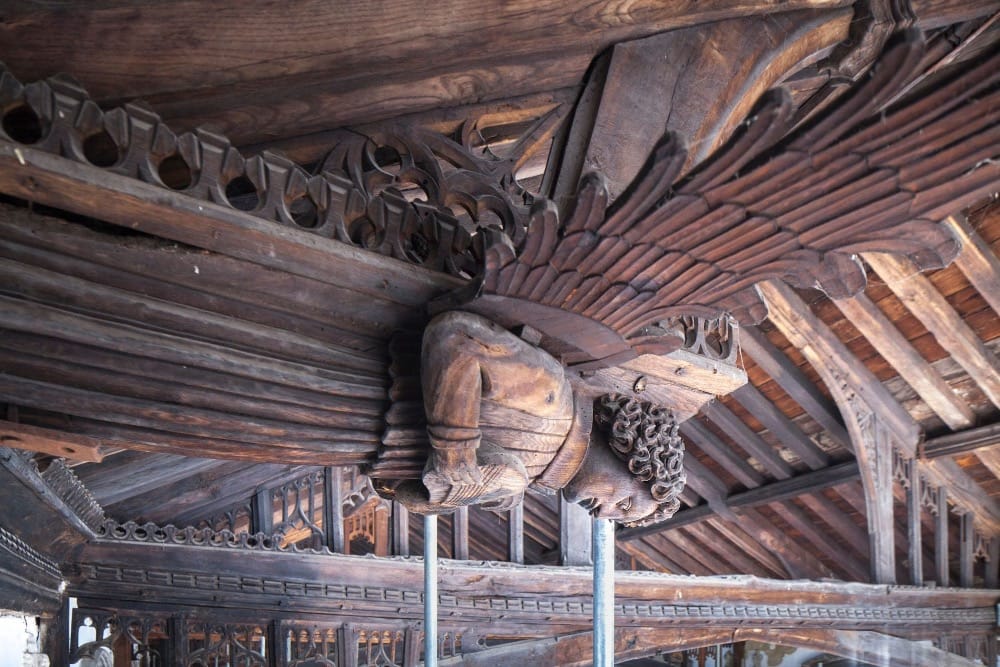
Up close and personal: an angel adorning the roof at St. Nicholas, King's Lynn.
"And flights of angels sing thee to thy rest."
Shakespeare, Hamlet.
The Angel on my Shoulder.

I remember the day well. I was visiting Dad as he grappled with the final stages of prostate cancer. I sat in the room with him, talking about the birds he had seen in the garden that day, and part way through his recollection, he stopped and stared in my direction.
‘What about the blackbird? Did you see the blackbird today?’ I asked.
He carried on staring and started to smile.
‘What’s wrong? Are you ok?’ I asked.
‘There’s an angel on your shoulder,’ he said.
Later, when I spoke of this to close friends and family, their response was, ‘That’ll be the morphine.’
I do understand that Dad’s vision was imbibed by morphine, but it doesn’t take away from its significance. I’m comforted by the fact that there was, within his frail body, a pocket of living tissue and chemicals that, after being released from their mundane duties by an opiate, seemed to weave into the warp and weft of his mind an angel perched upon my shoulder. It could have been a monster, or a devil, or a wart—but it wasn’t.
I carry that memory with me, and whenever I come across depictions of angels, I feel a particular tenderness towards them. Thinking later about Dad's angelic visitor reminded me of some words from Milton's Paradise Lost:
"Millions of spiritual creatures walk the earth / Unseen, both when we wake and when we sleep."
To me, angels symbolise the warmth of our shared humanity and remind us that, even in our increasingly complex world, there remains a glimmer of magic and hope.
The most recent Member Powered Photography photo shoot took place at St. Wendreda’s in March, which has a roof full of angelic carvings.
When I arrive, I meet Rev Ruth Clay. She is enigmatic, enthusiastic, and inspiring. She tells me that the angels are under threat, indirectly, from structural problems with the medieval spire. Metal braces appear to have compromised the resilience of the spire, necessitating £250,000 in repairs.
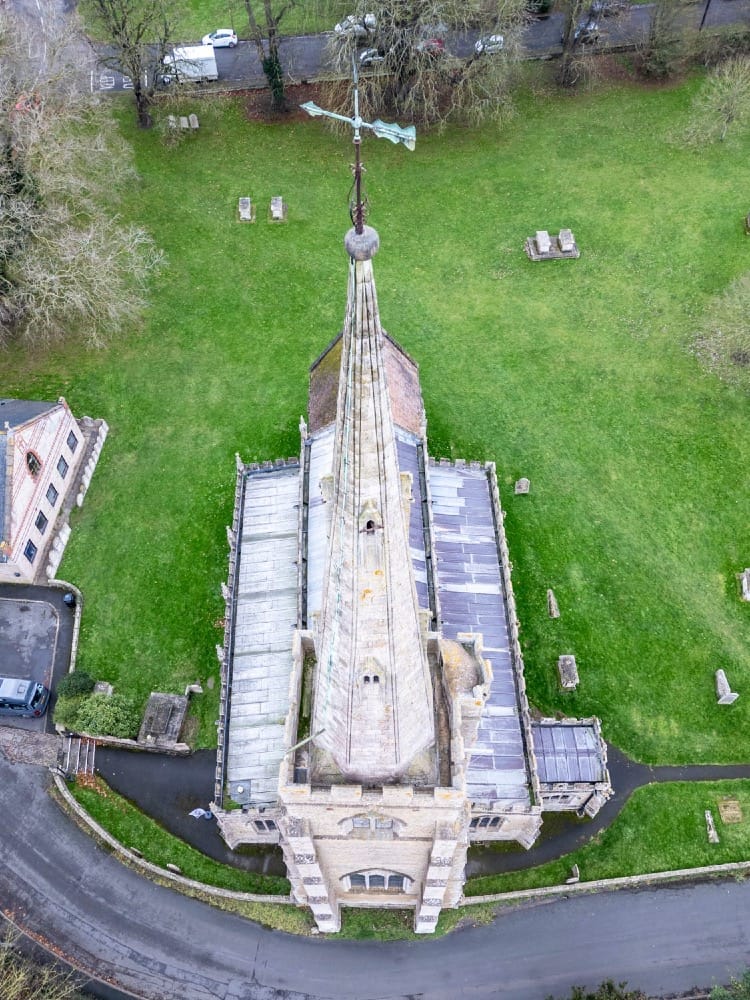
Ruth leaves me with that sobering thought as I set up to photograph the church interior, but before I do, I sit and take it all in. I look upwards and along the hammer beams towards the chancel—the sight is too vast to comprehend in a single view. The angels, flecked with wings, seem to hover; their airiness elevated by the artisans who carved them with a reverence that is palpable. With the curious disposition we humans are blessed with, I find that in dim light, the soft blur at the edges of my vision makes the angels oscillate gently, as if stirring in the half-light.
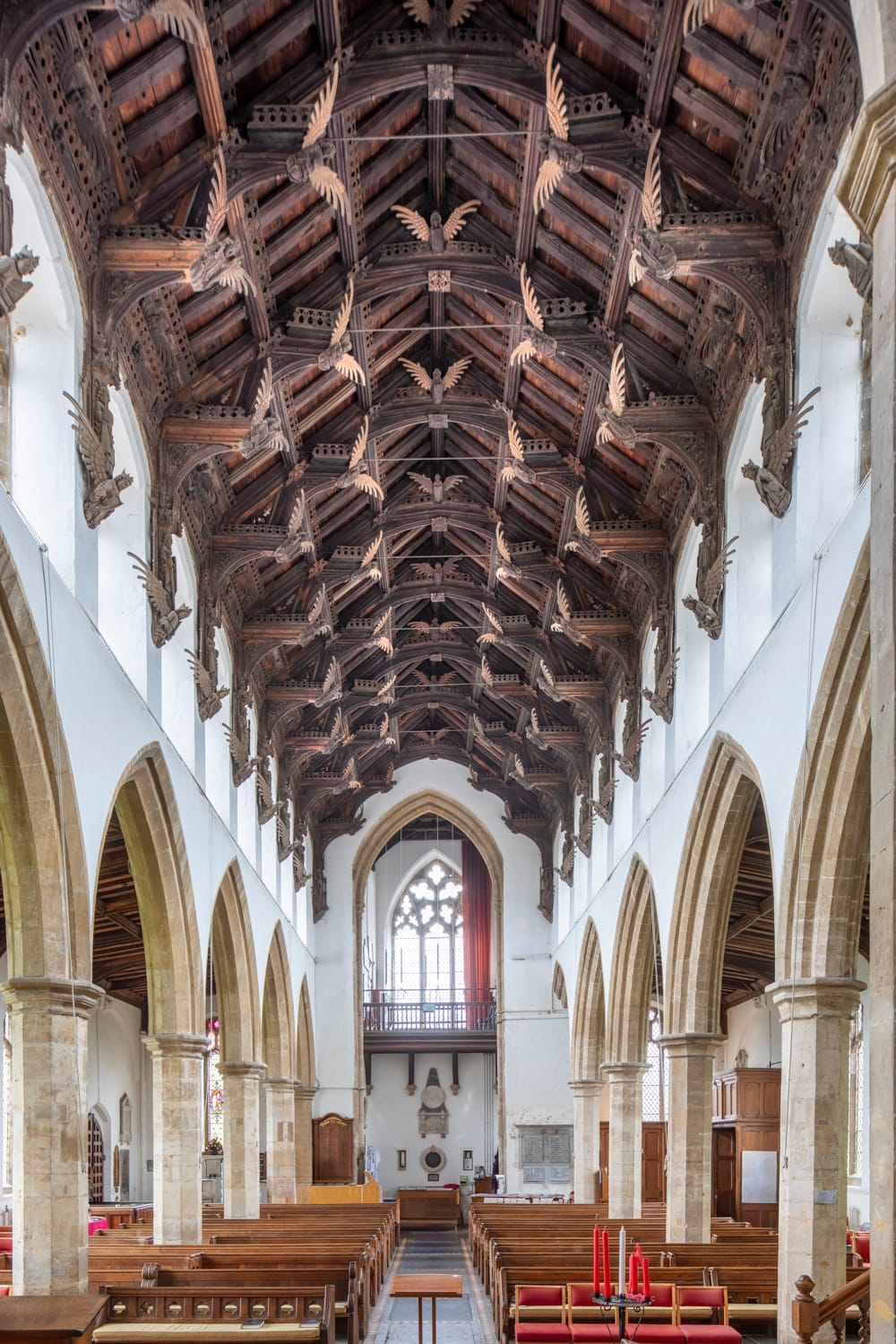
They oscillate even more when, after pressing the shutter button on my camera, I forget how long the exposure is and move the camera prematurely. The result is an image that captures great white streaks of movement across the nave—angels' flights of fancy, not induced by morphine.
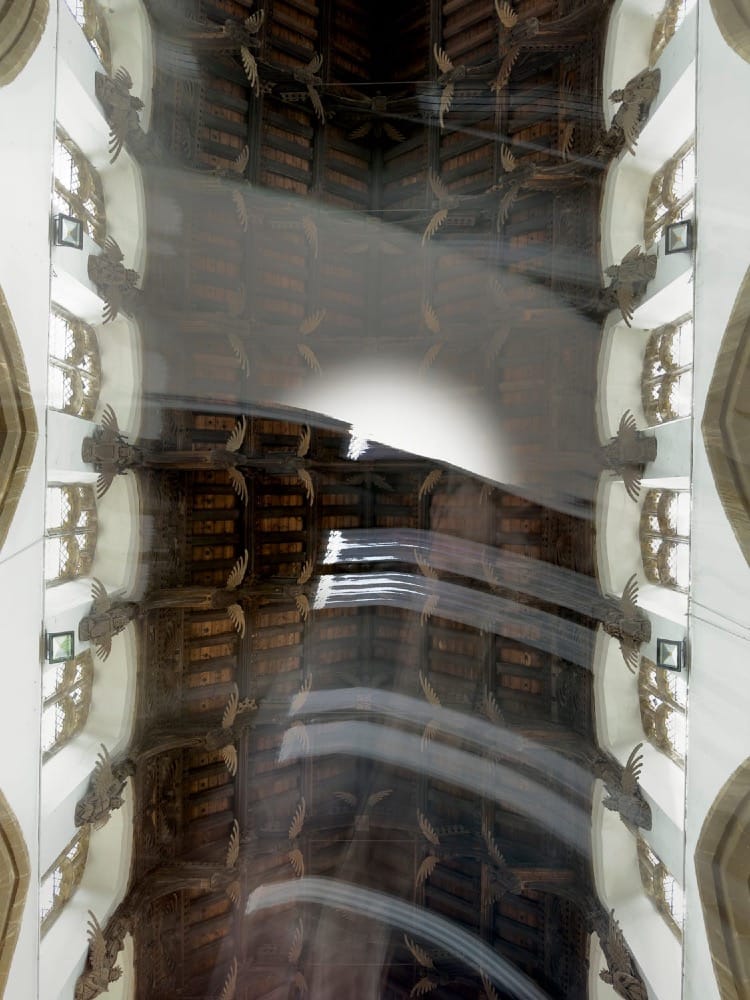
Once foliate, these oaken beams now form a celestial canopy where instead of leaves, feathered wings hover in the updraft. And in that respect, it feels deeply appropriate that the tree, which was for thousands of years a powerful symbol of veneration and wonder, has been transformed here into a roof full of angels, elevating our primeval awe to new heights of rapture. If a present-day artist created something like this and shoehorned it into one of our biggest art galleries, crowds would flock to see it. But, as Ruth tells me, with the brighter lights of Cambridge and Ely nearby, visitor numbers are low.
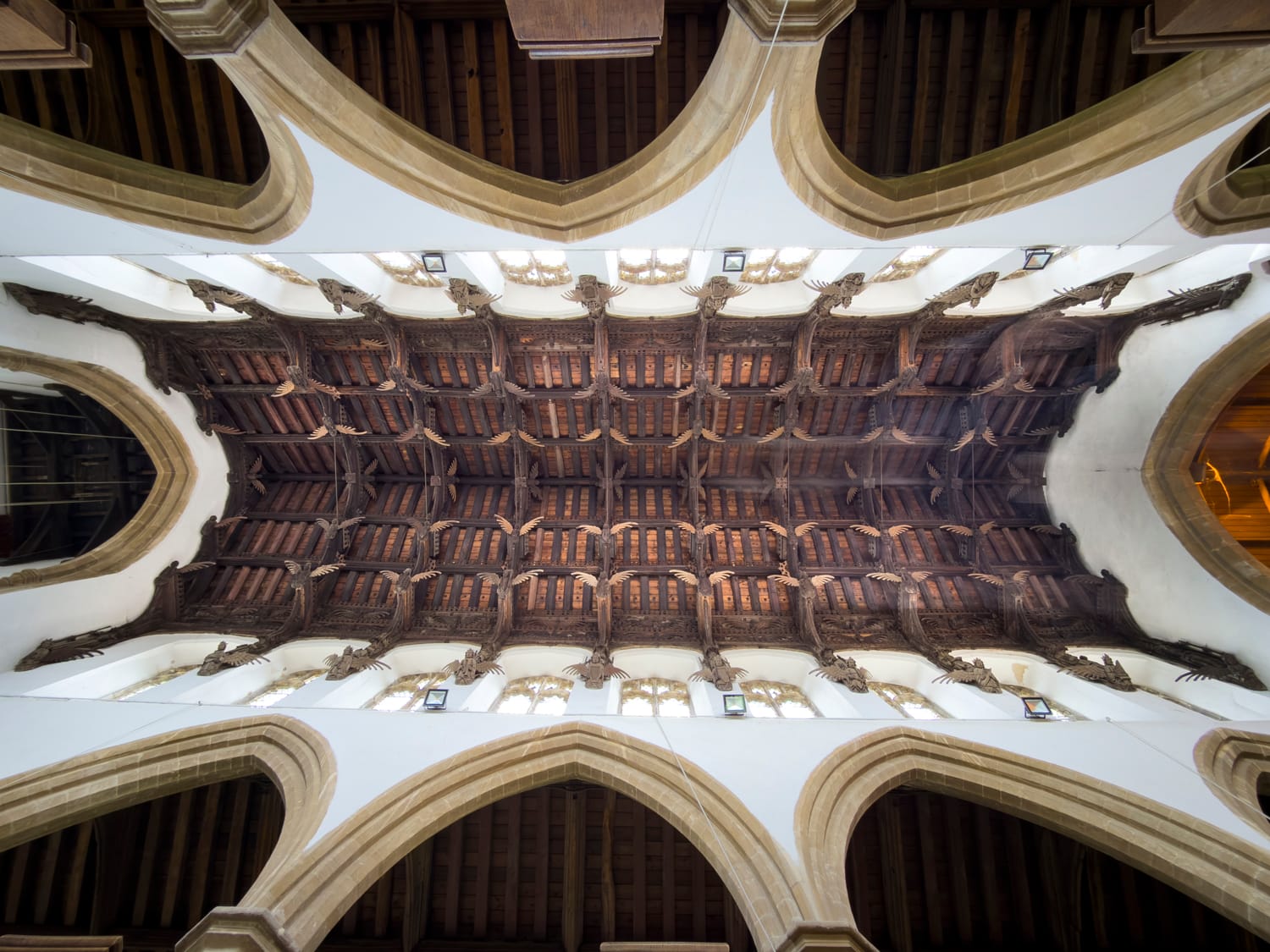
This roof has spent several hundred years inspiring those who stand beneath it, challenging their imaginations and nourishing their spirits. The poet John Betjeman once said he would travel forty miles on a bicycle in a headwind just to see the roof at March. Digest member Robert Gower shared with me how the angel roof inspired composer Gerald Finzi’s work. Finzi observed:
‘There is a great resemblance between the static and the ecstatic. I discovered this one day when I was standing in March Church, looking up at the double hammer-beam roof and the row of carved angels—which gave the feeling of a Botticelli Nativity and were static from very ecstasy.’
Composer and saxophonist Julian Argüelles felt similarly inspired. His composition, A Wing and a Prayer, for orchestra and jazz quartet, was born from a visit to St. Wendreda’s in the late 1990s.
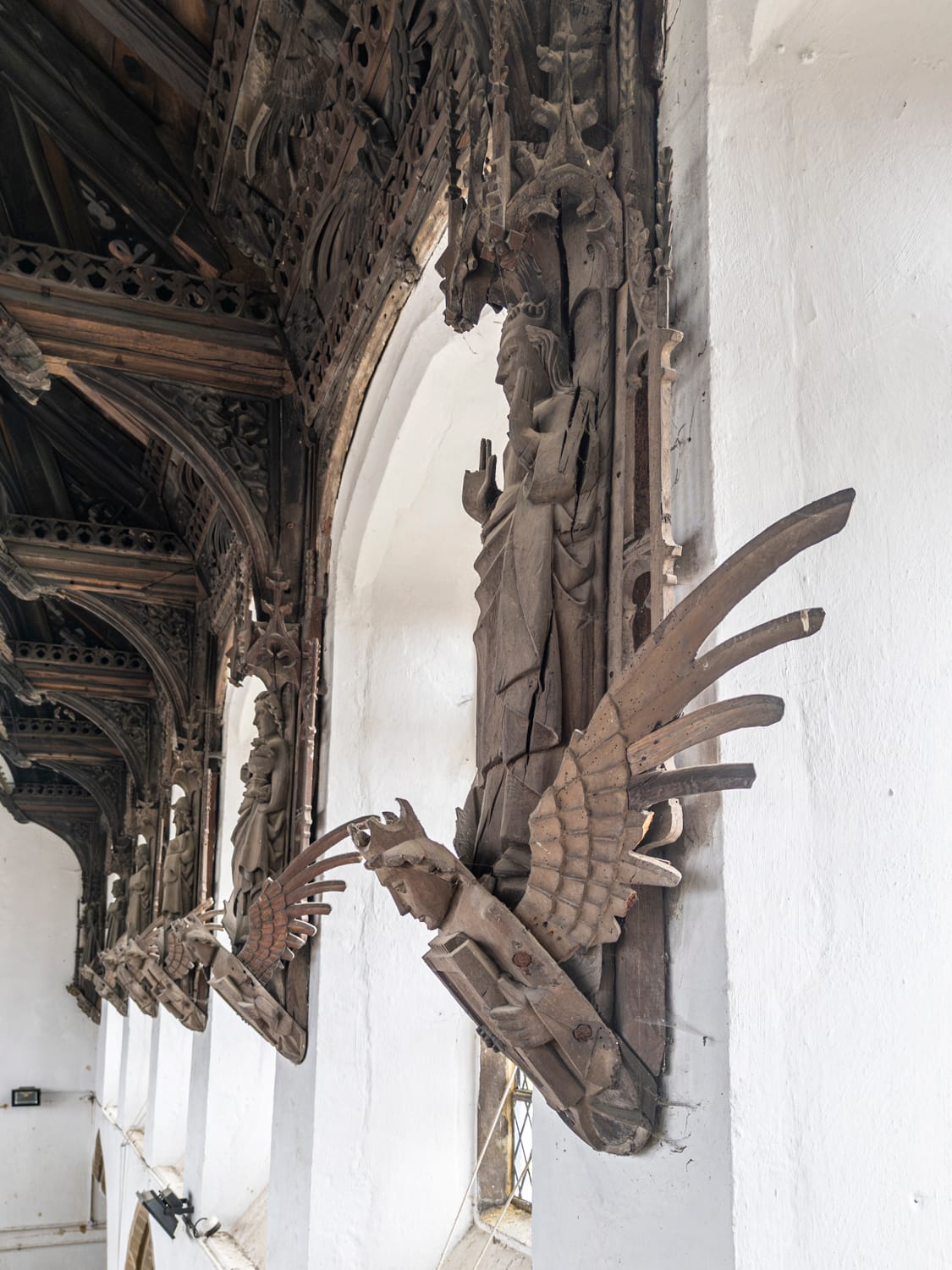
The survival of these angels transcends their original purpose or the beliefs they embody. They are cultural touchstones, rare and remarkable expressions of medieval craftsmanship, each one carrying the imprint of the artisans who carved them centuries ago. But their significance isn’t just historical. They speak to something timeless—the human impulse to create, to endure, to leave a mark. While churches might, for some, serve as reminders of past divisions, they are also places of shared endeavour, shaped by the hands of ordinary people. These angel roofs, suspended high above, remind us that even in the most testing times, beauty and meaning can be carved into the fabric of our world.
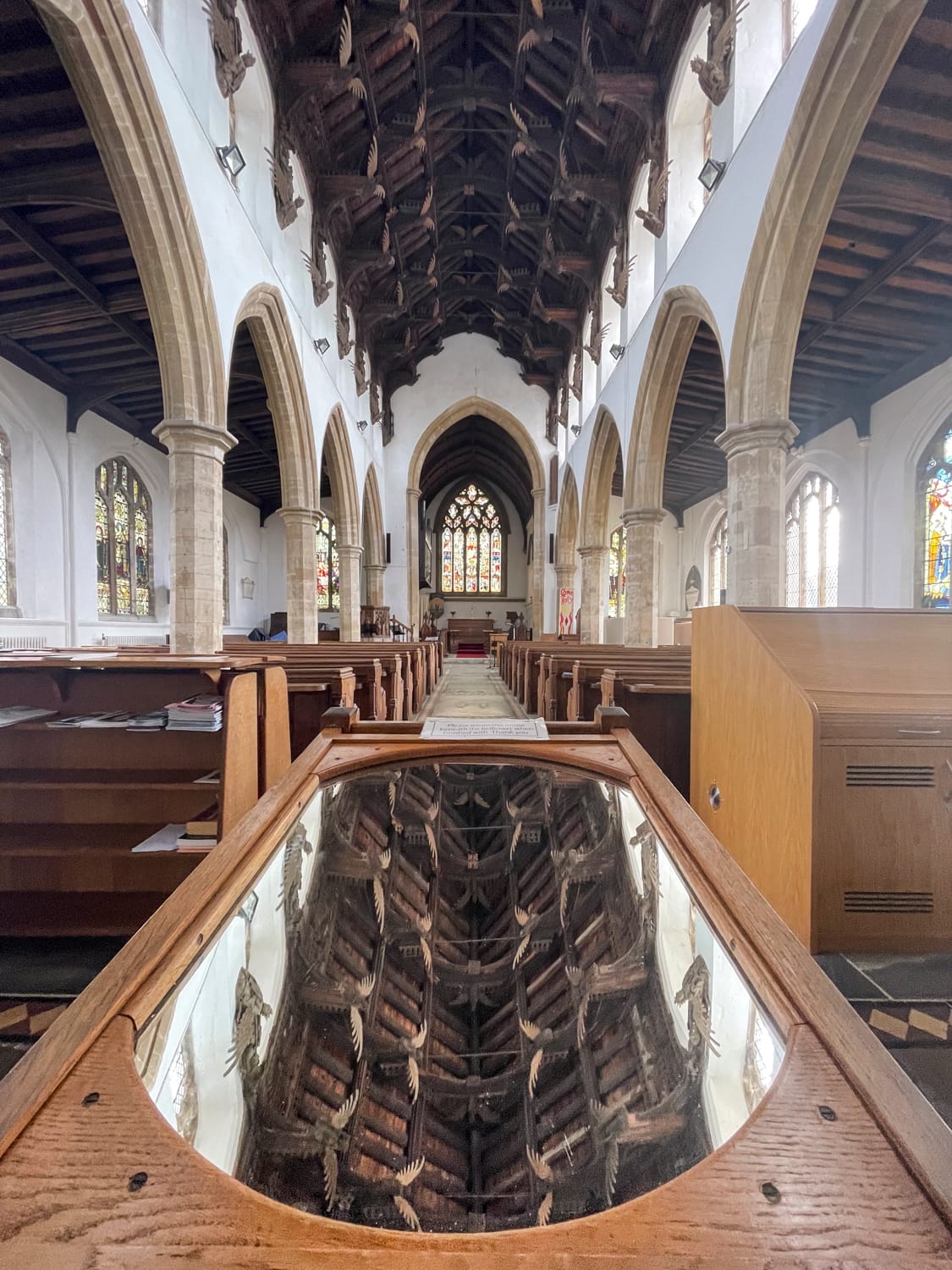
Polarised views of our church heritage negate the nuanced evolution of these places, shaped through the endeavours of countless hands, countless beliefs, countless origins. Even up until last year, the thought that we might be the generation to sever this continuity and betray the permanence these buildings represent felt like an abstract concern—a distant worry. But no more. In this climate of fragmentation and crisis, where anxiety about our future increases day by day, it is easy to sleepwalk into a world where places like St. Wendreda's dissolve into memory.
But we do this at our peril. Within this priceless material record lie reminders not only of our ingenuity but also of our resilience. Their survival would articulate a faith in the long view; it would signal that we still have the capacity to consider future generations, even when we are not here to witness the fruits of our labour. And that act alone feels right for our times—it is vital to our humanity—because societies that embrace the long view are those that hold their children at heart, preserving and amplifying the values that sustain them.
I think back to my Dad’s vision of the angel on my shoulder, a fleeting comfort as he faced his own personal challenge. If one angel could help him meet that moment with grace, then surely this host of angels at March, born from an ecstasy of the imagination, can inspire us all to rise and meet the immense challenges of our time. These angels, guardians of hope and resilience, tell us that even now, we too can carve our way through the darkness and find a way forward.
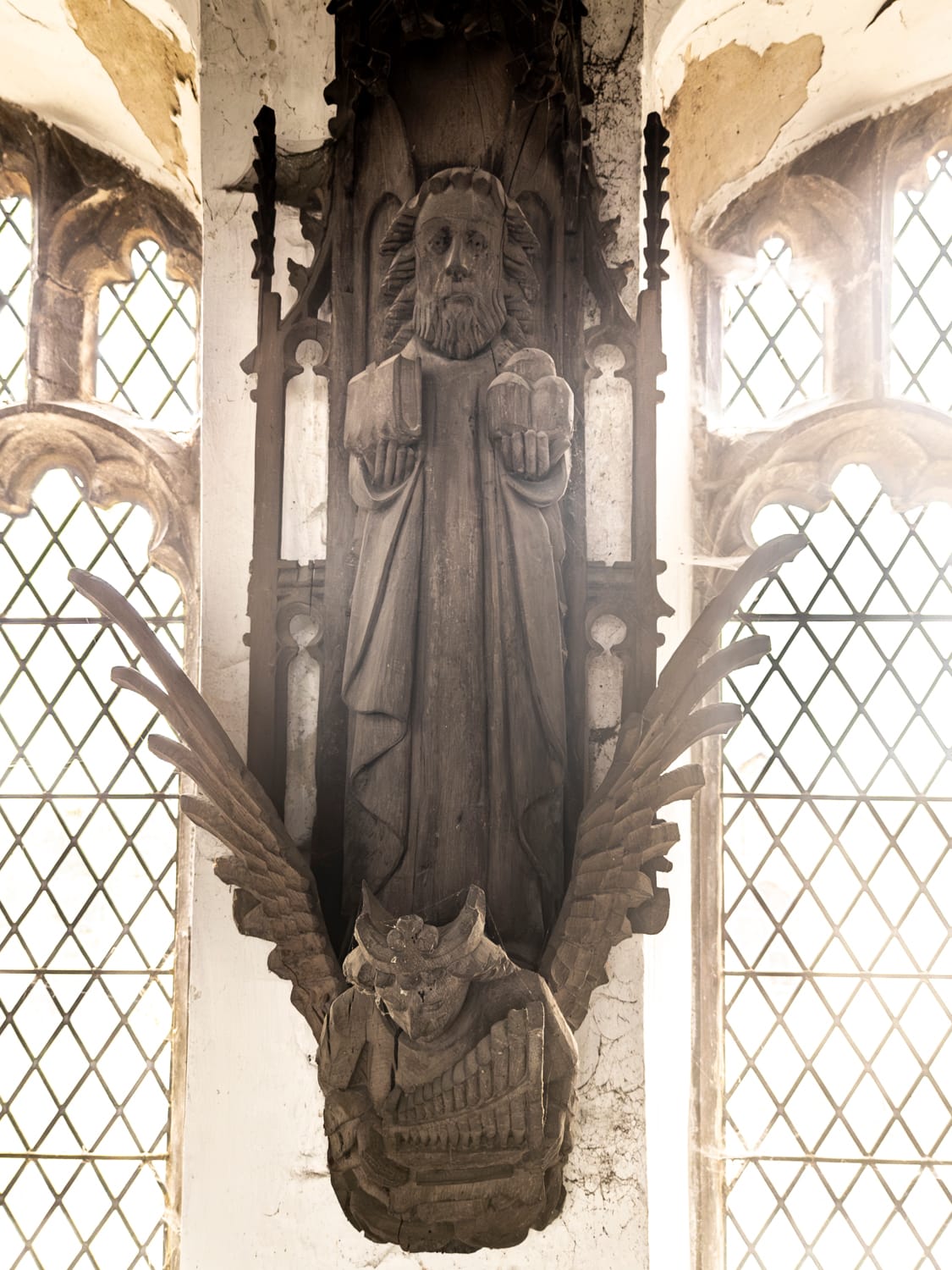
You can find out more about St. Wen's spire appeal here:
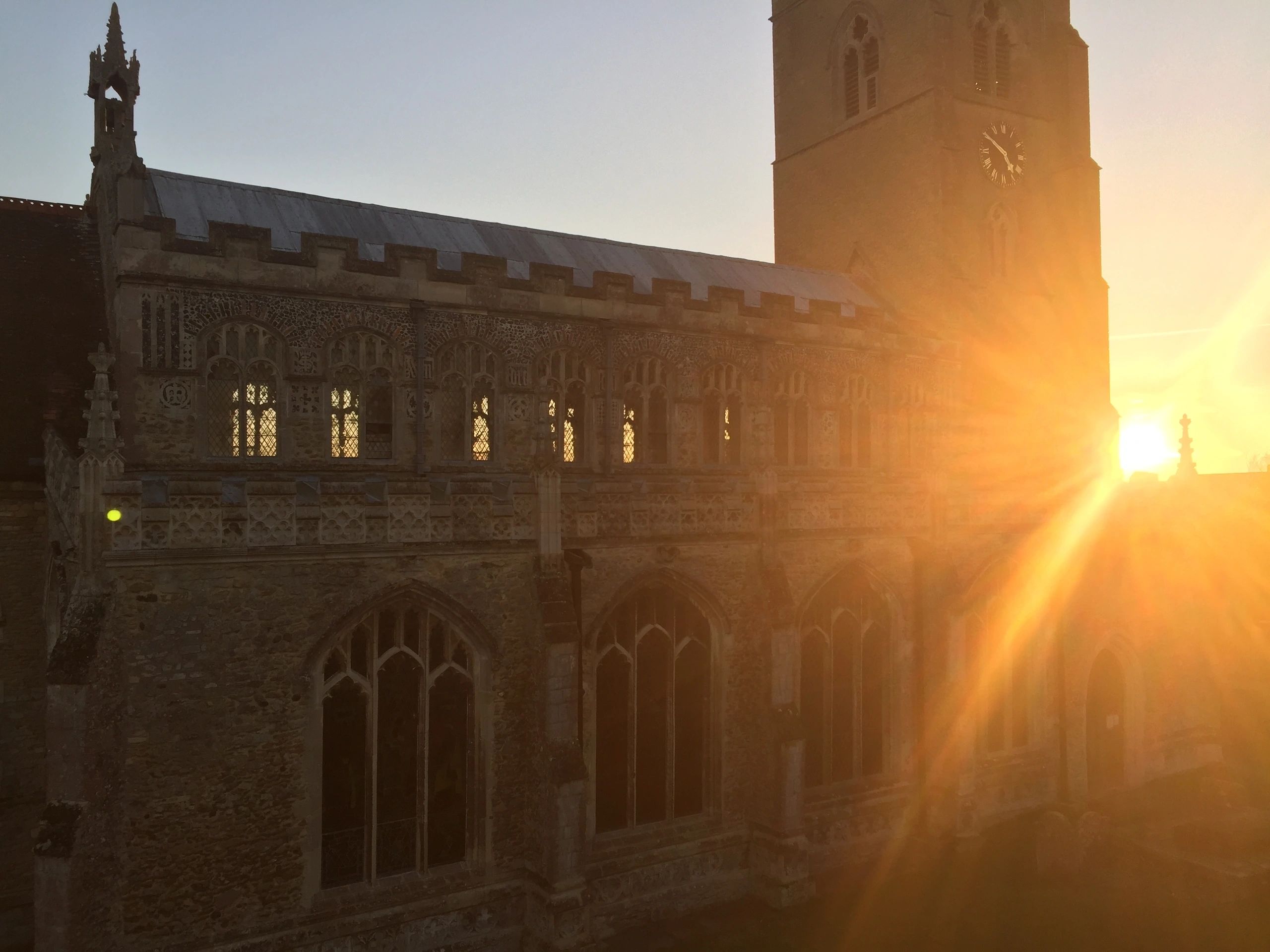
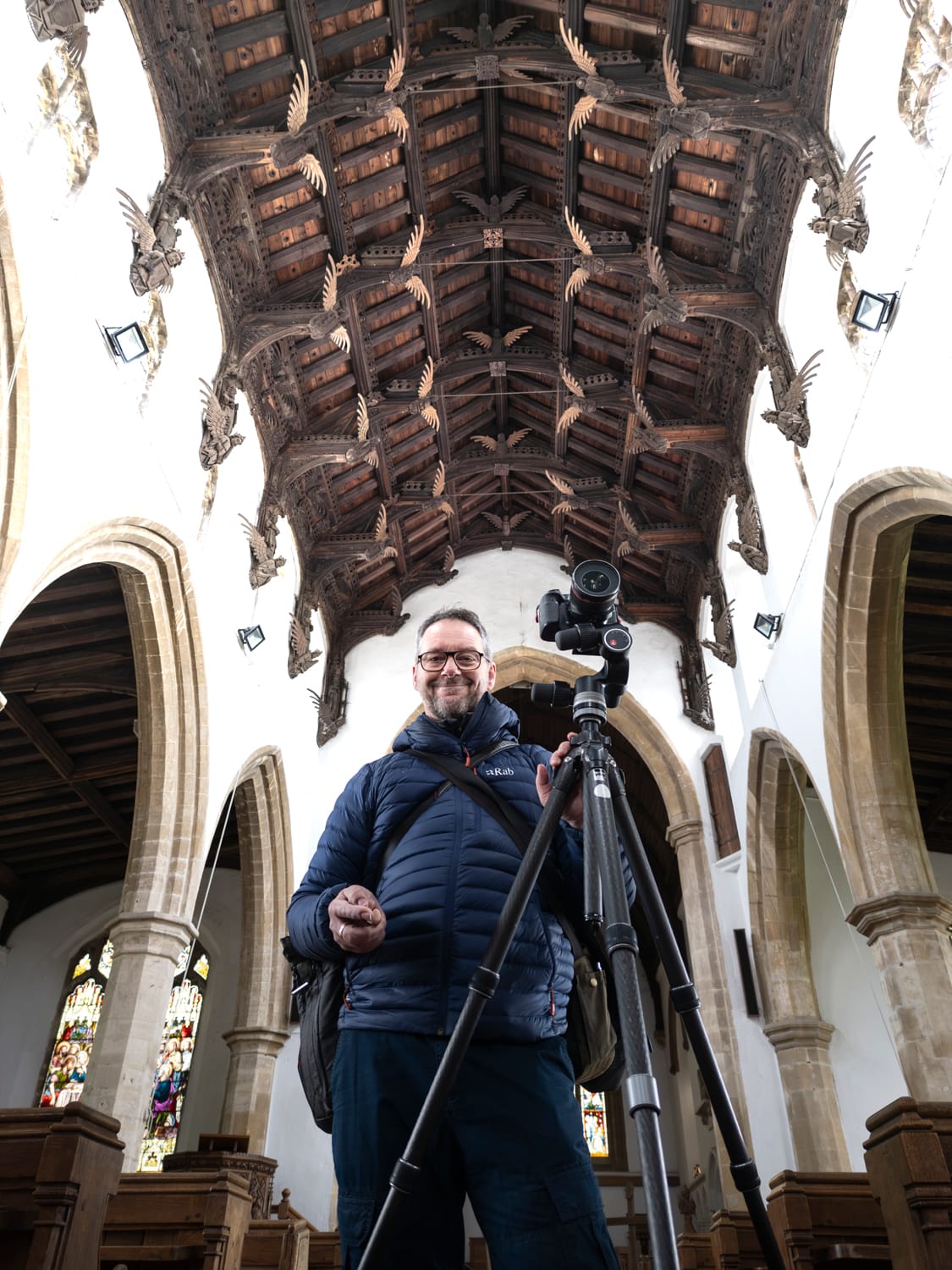
✨ The photo shoot at St. Wendreda in March was made possible through Member Powered Photography (MPP) at no cost to the church. Thank you to all Members for helping make this possible. More information about MPP below:
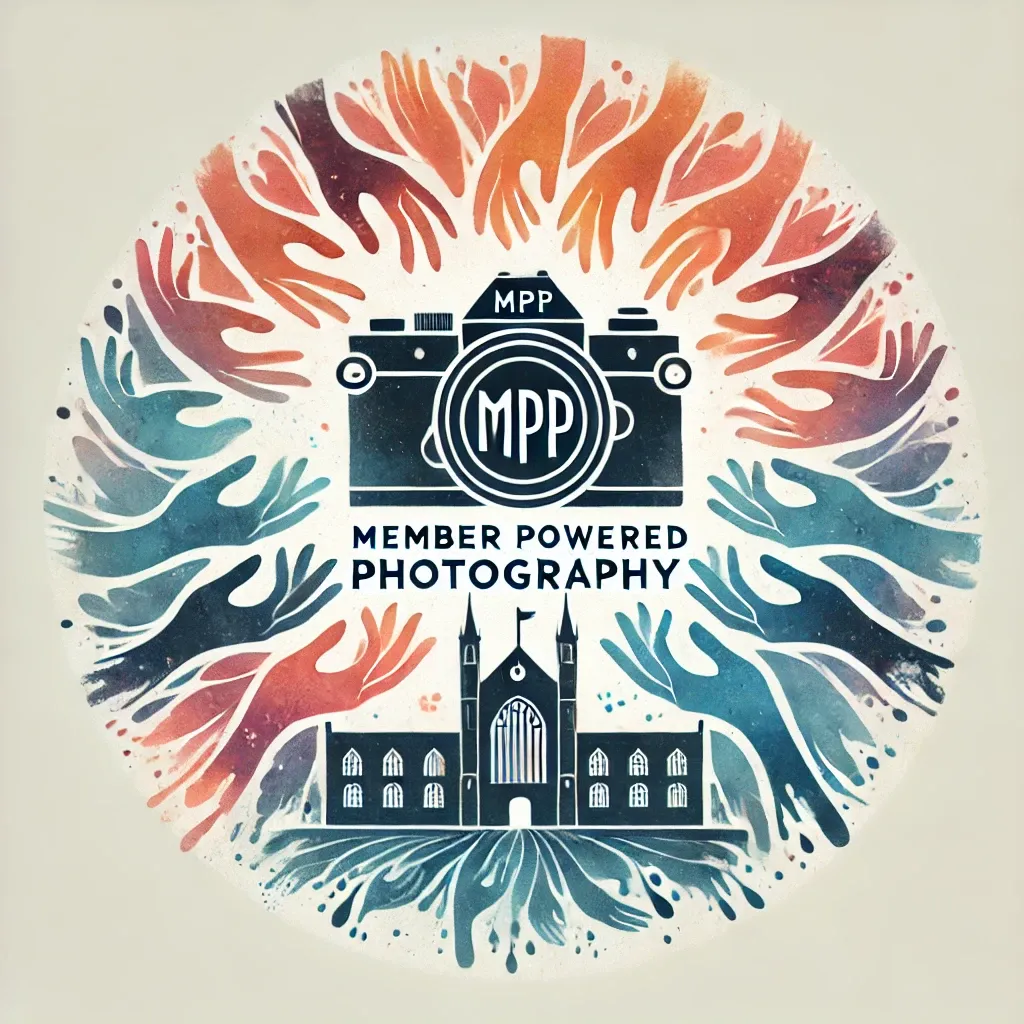
St. Wendreda, March
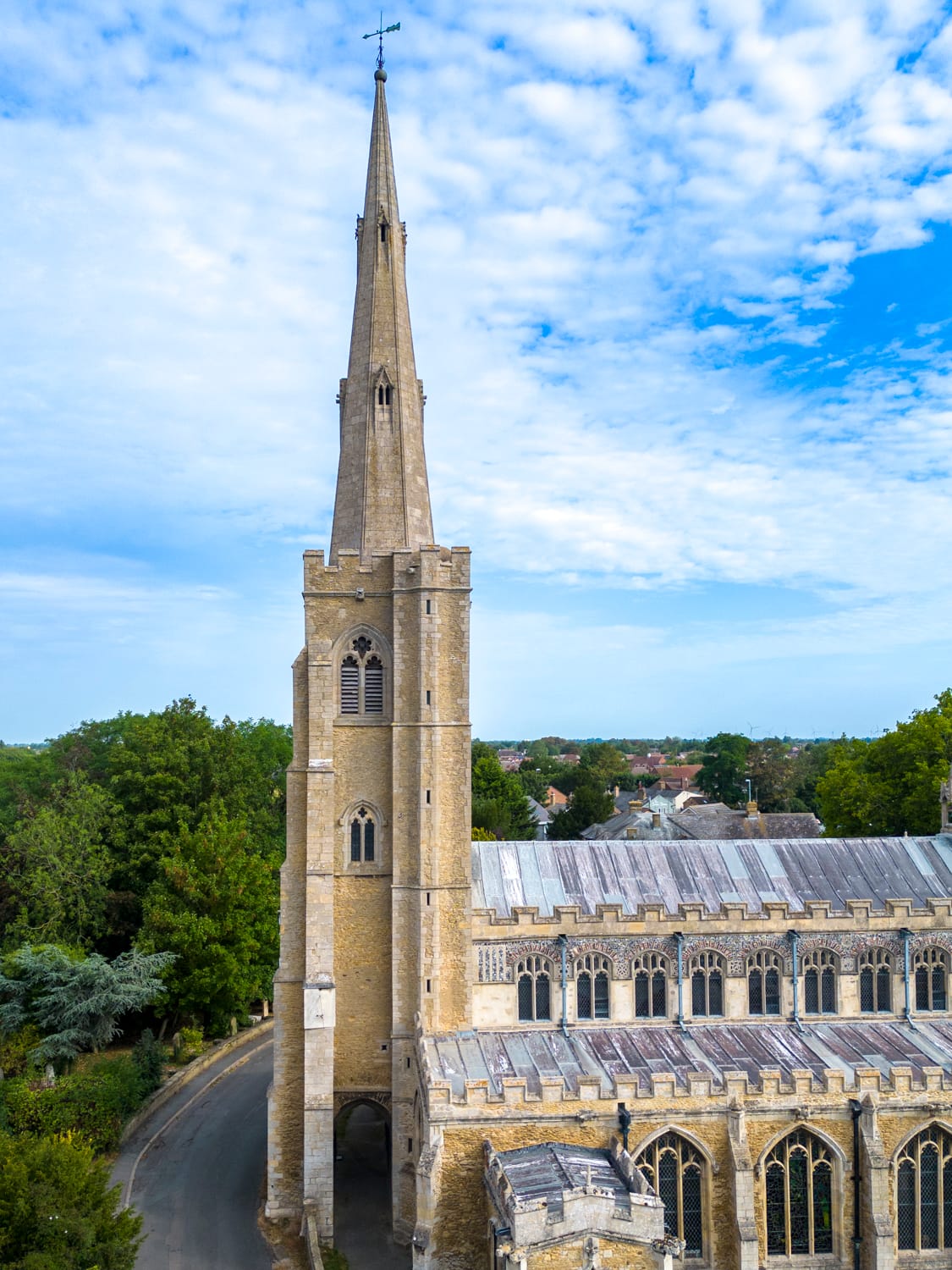
Constructed primarily in the 14th and 15th centuries, the church has a unique tower, featuring a processional route beneath, allowed ceremonial access, a rare feature in English churches. Dedicated to St. Wendreda, a 7th-century Saxon saint. Her sister, St. Etheldreda, was the founder of Ely Cathedral and a revered figure in East Anglian Christianity. Together, they underscore the region's rich spiritual heritage.
The Roof
St. Wendreda’s Church in March, Cambridgeshire, is famed for its remarkable double hammer-beam roof, adorned with wooden angels, a masterpiece of medieval craftsmanship.
The roof features 120 angels alongside 19 canopied depictions of saints and martyrs. The intricate woodwork was crafted by the Rollesbury brothers in Bacton, Norfolk, between 1523 and 1526.
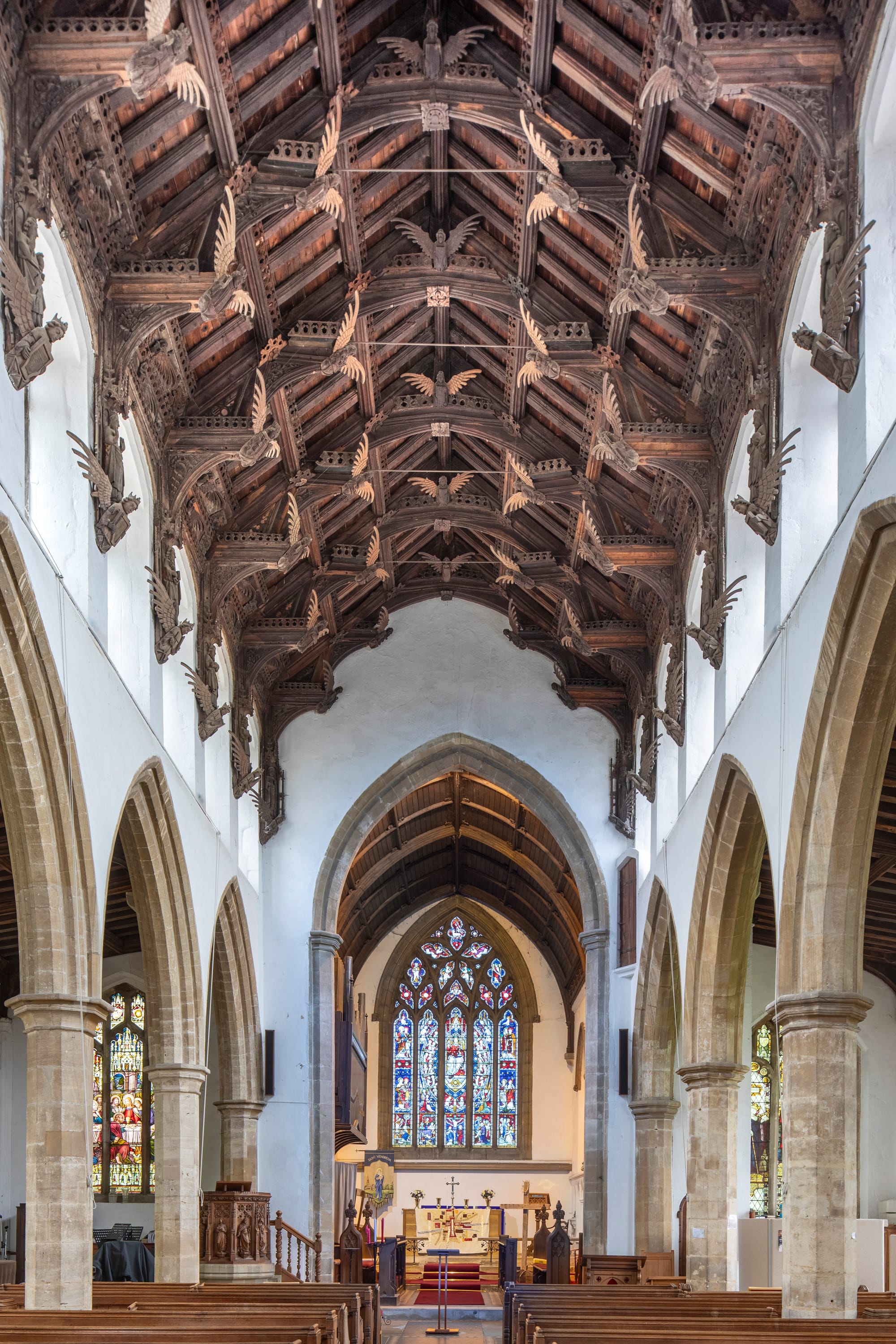
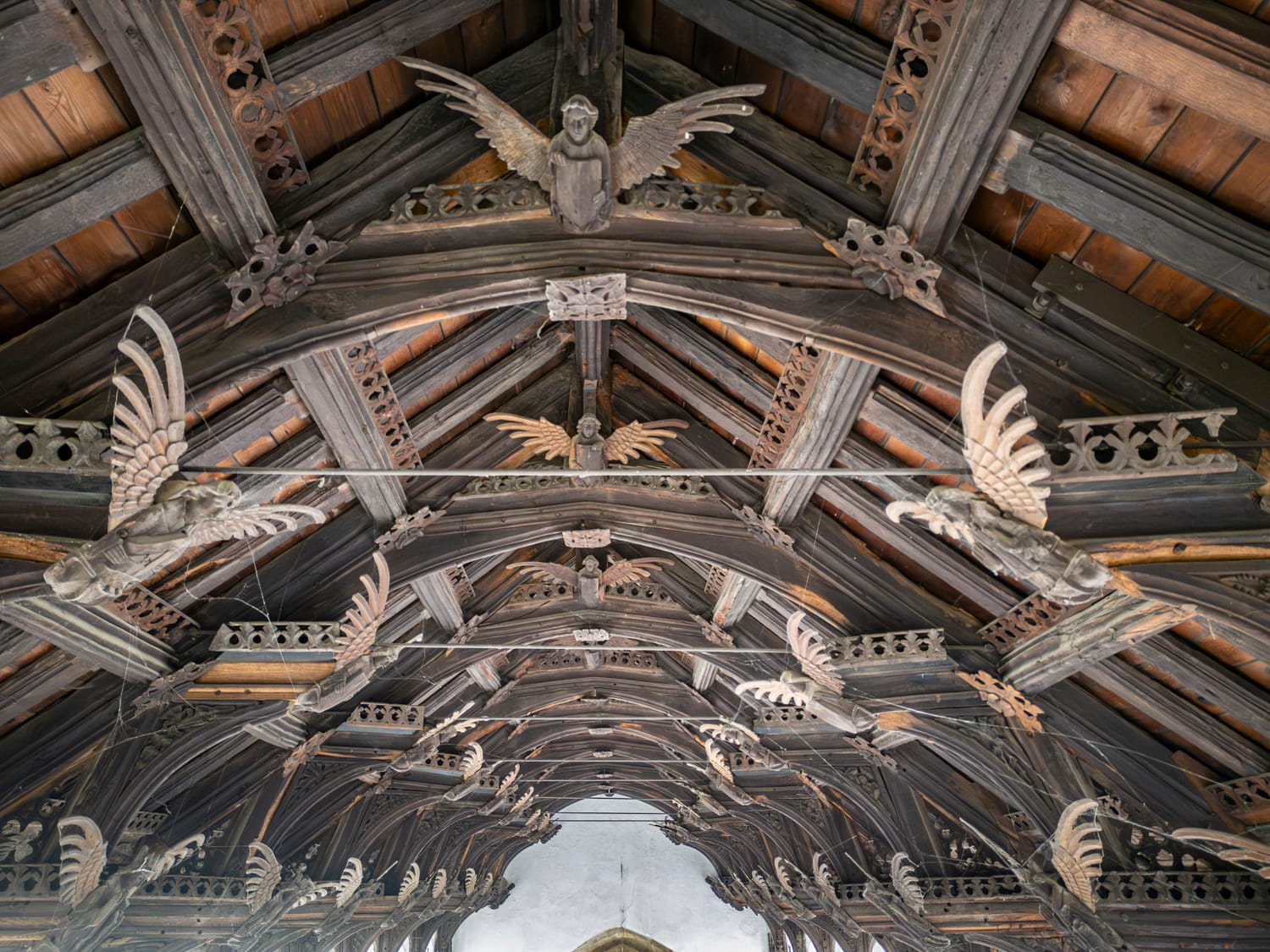
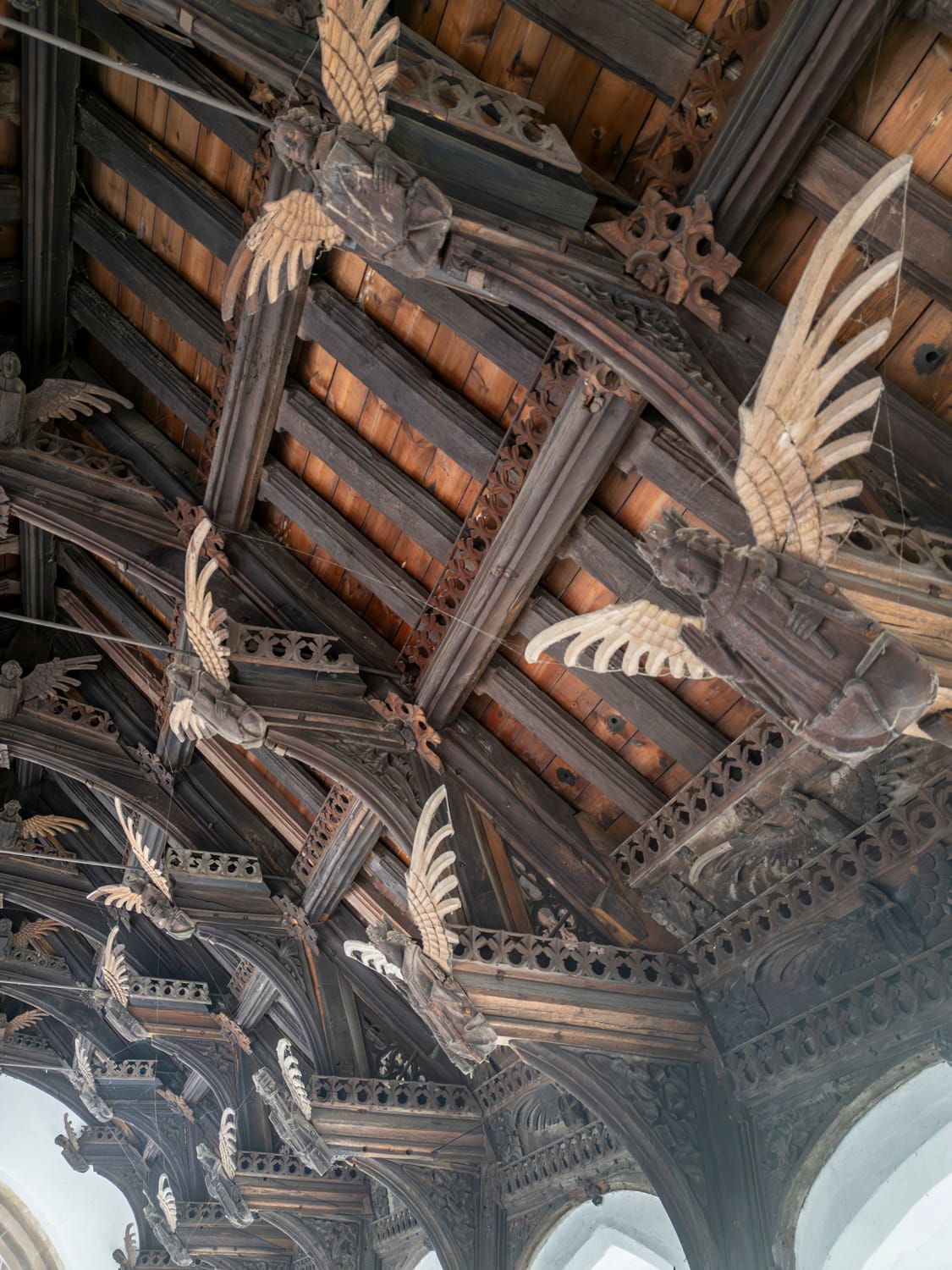
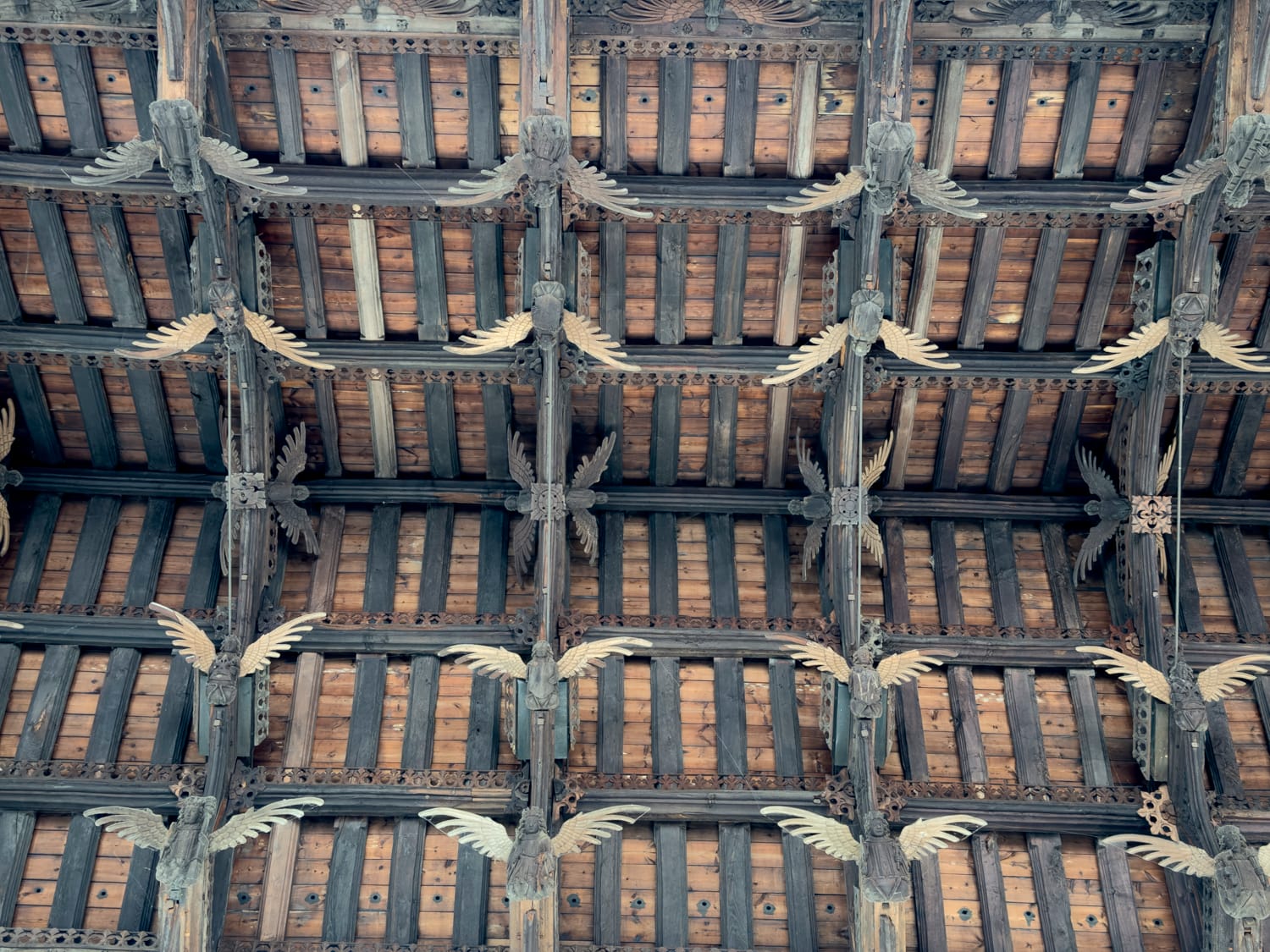
There is a face in one of the spandrels. Some say it is the devil - but it looks quite congenial to me.
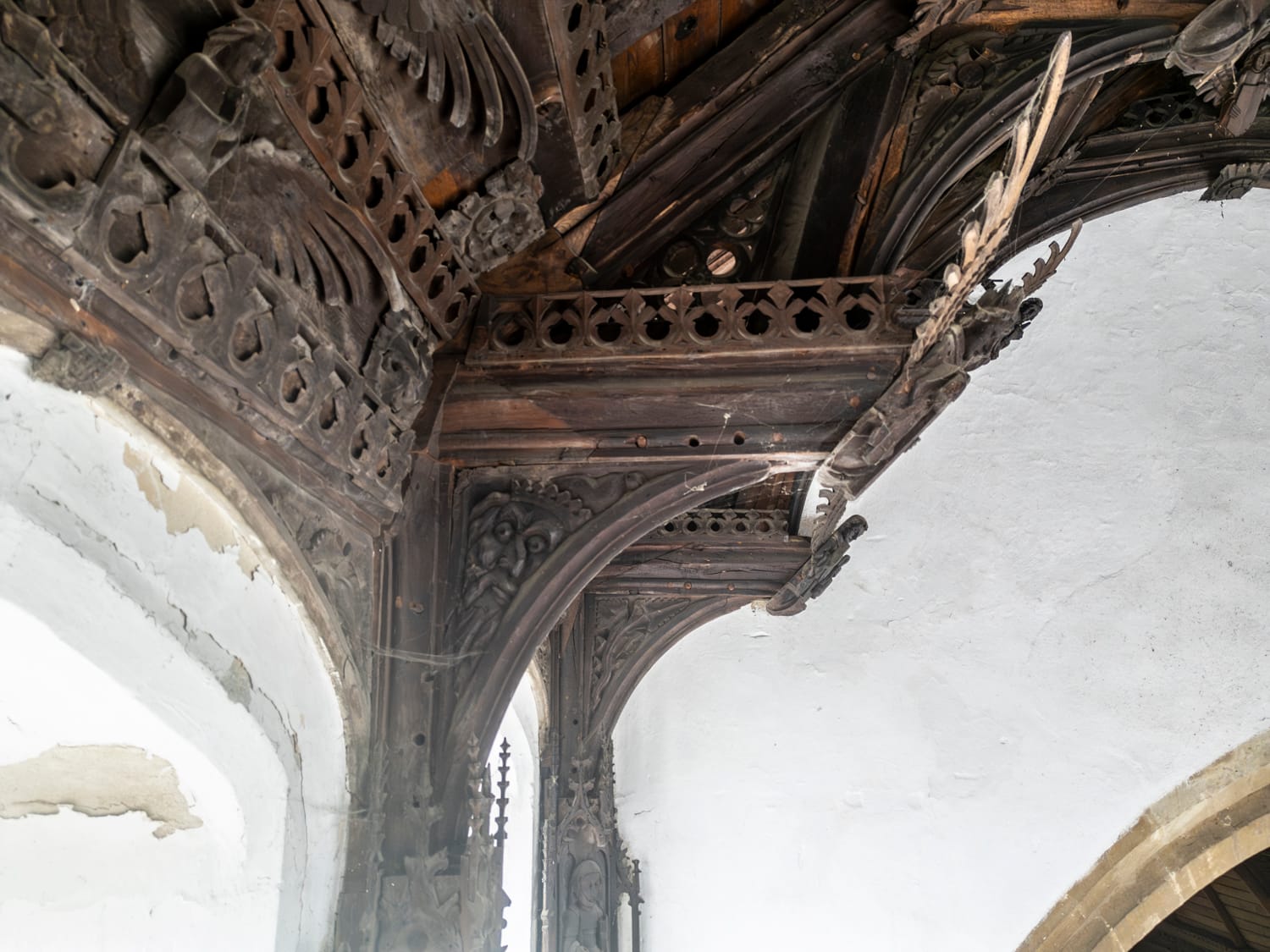
Member's can get up close and personal amongst the roof timbers at St. Wendreda by viewing this wonderful VR (viewable on any device)
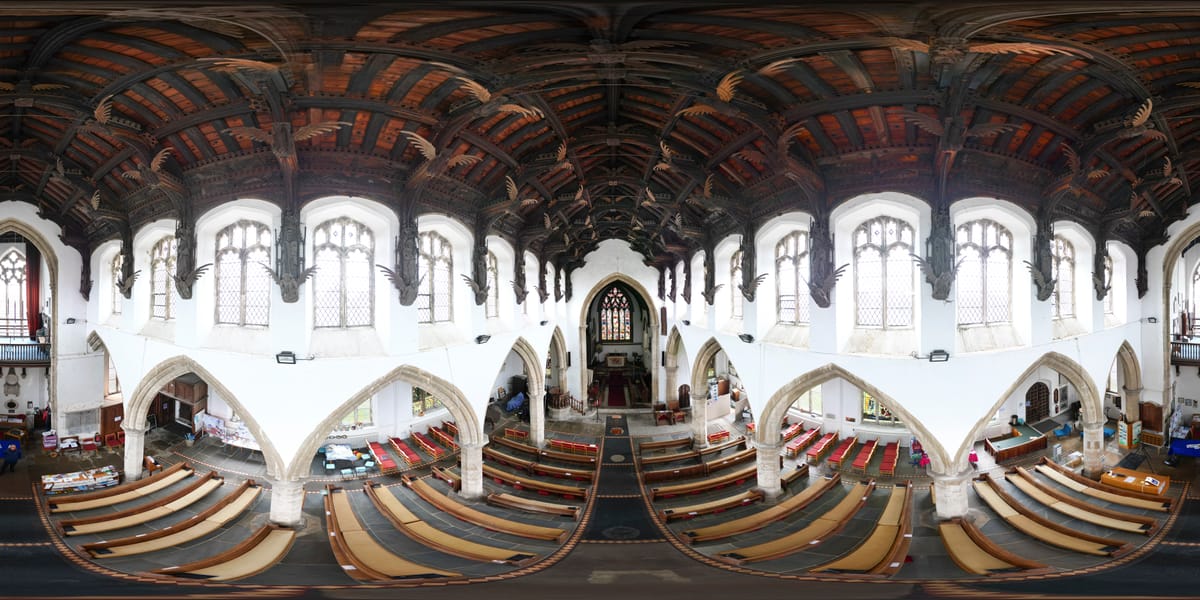
St. Wendreda's isn't just defined by its angel roof. It also has some fine Victorian stained glass, a C12th font which has been curiously re-cut from the square into an octagon, and some lovely brasses with Gothic script.
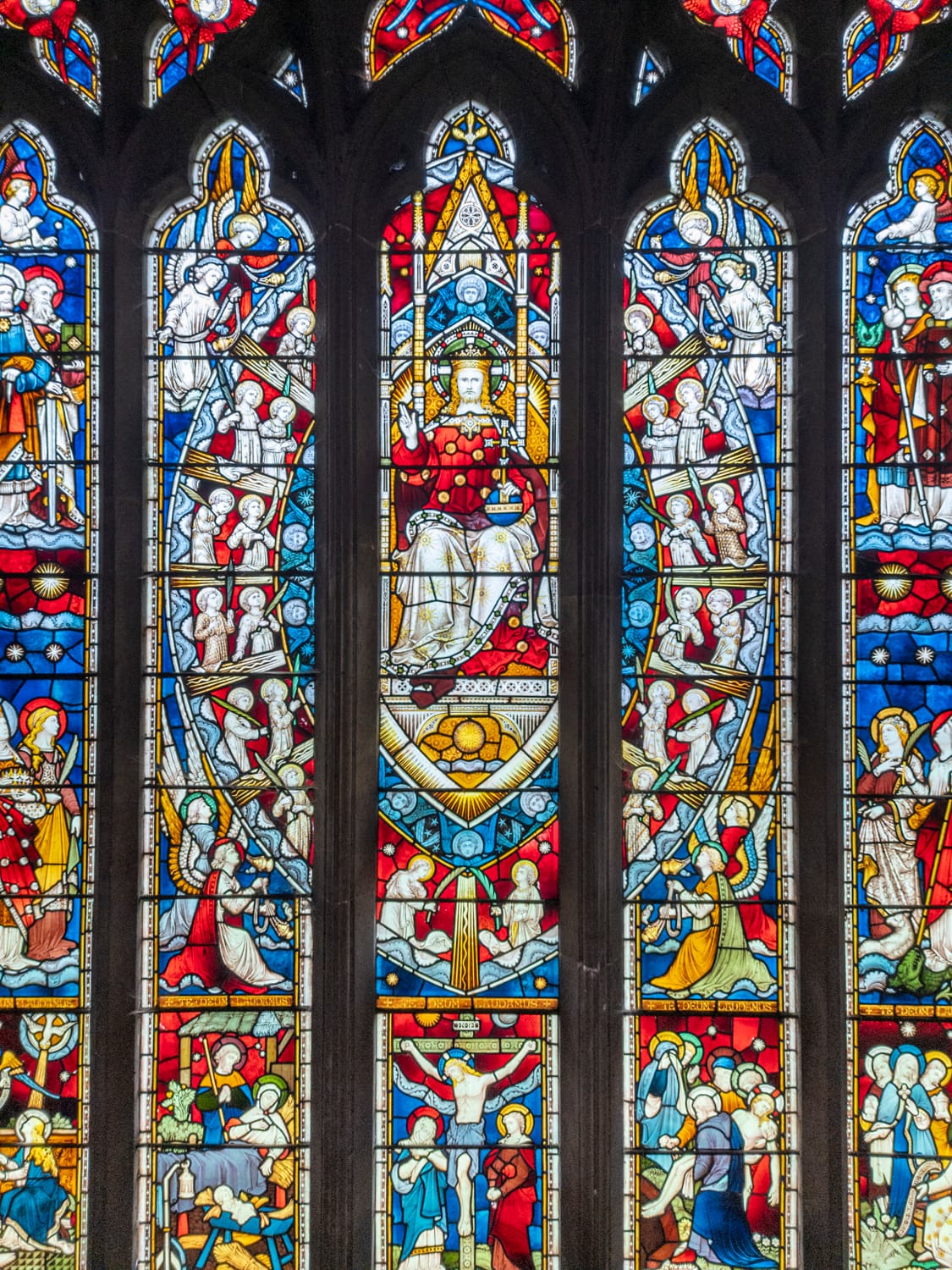
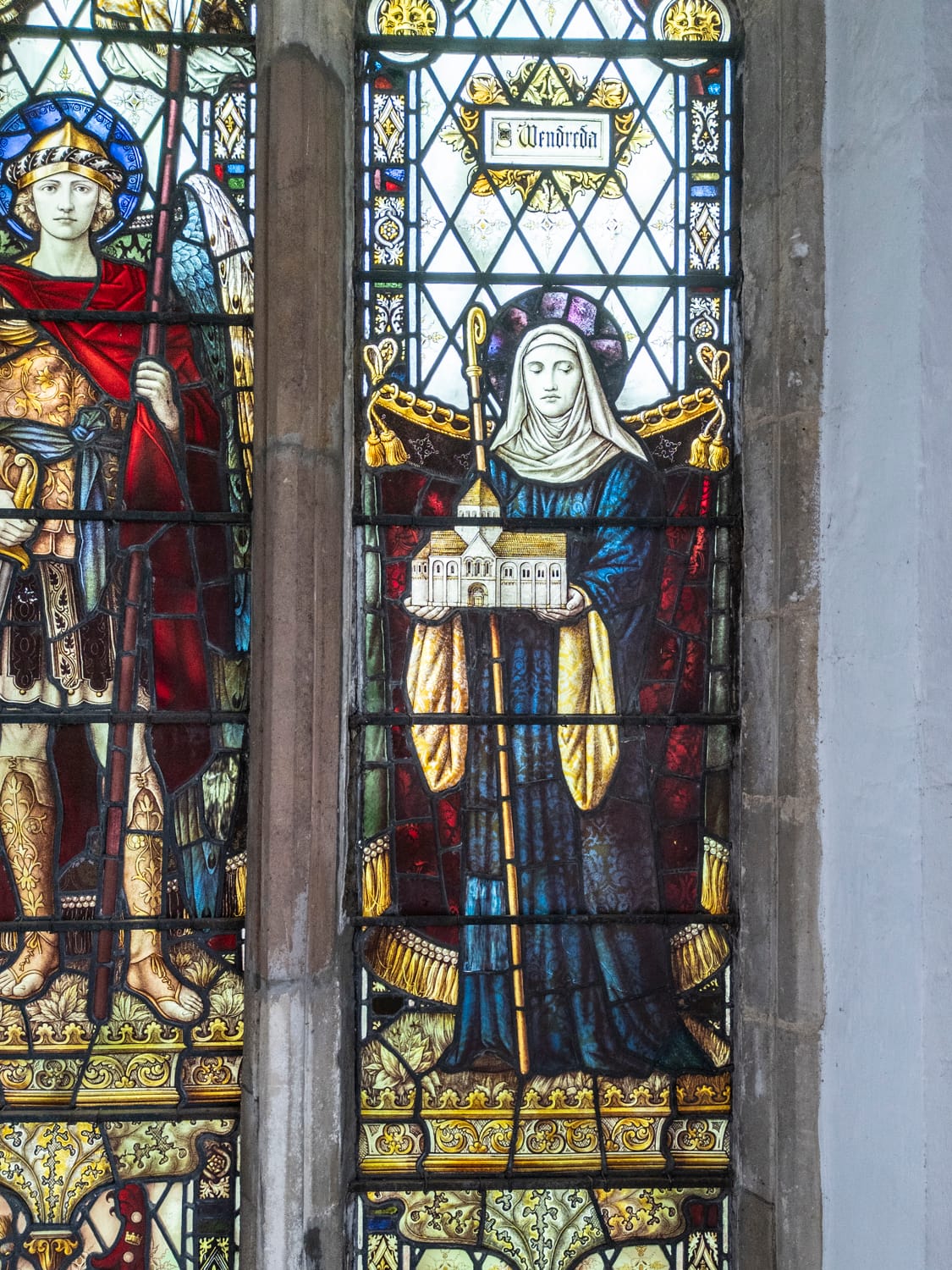
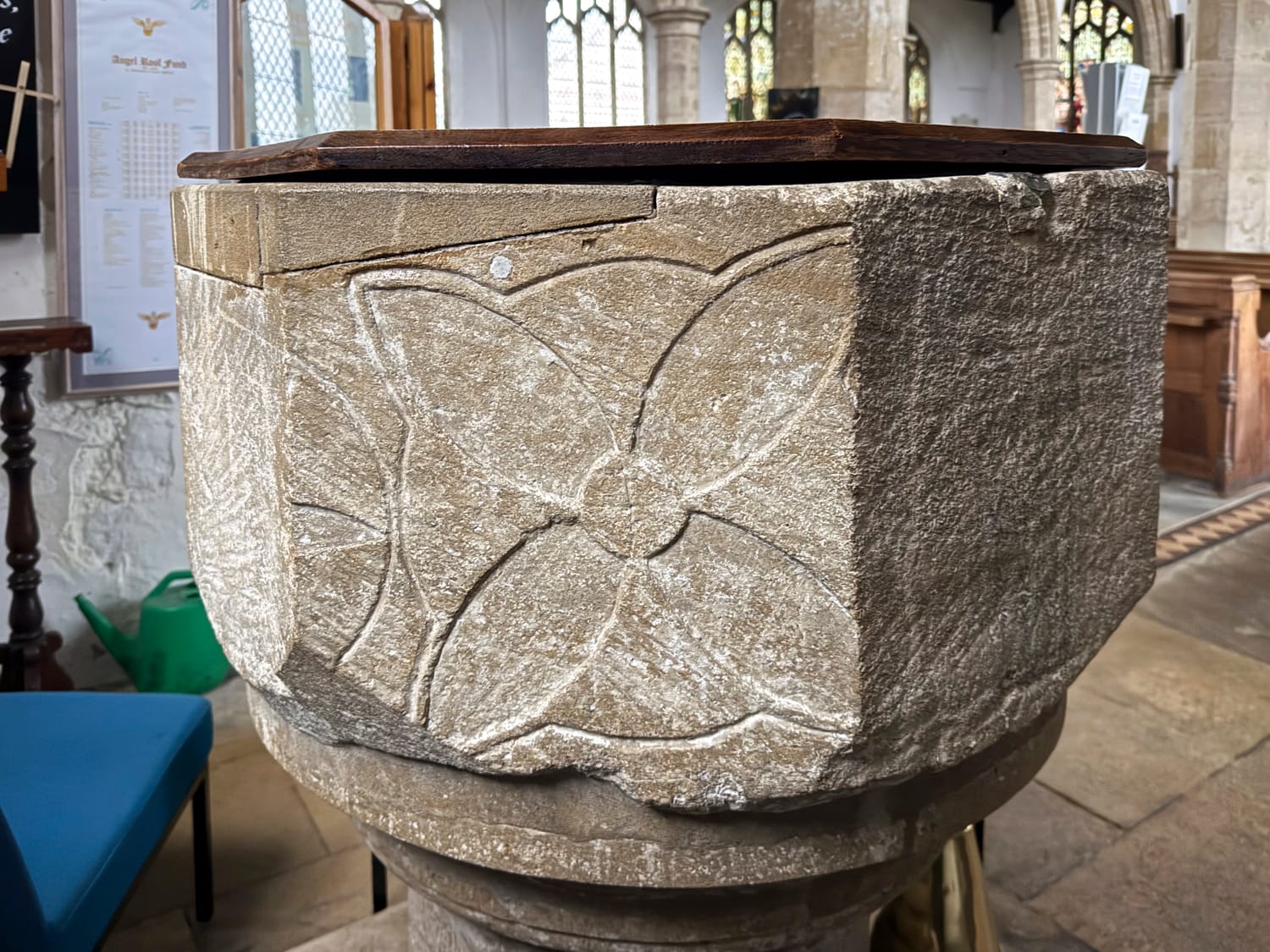
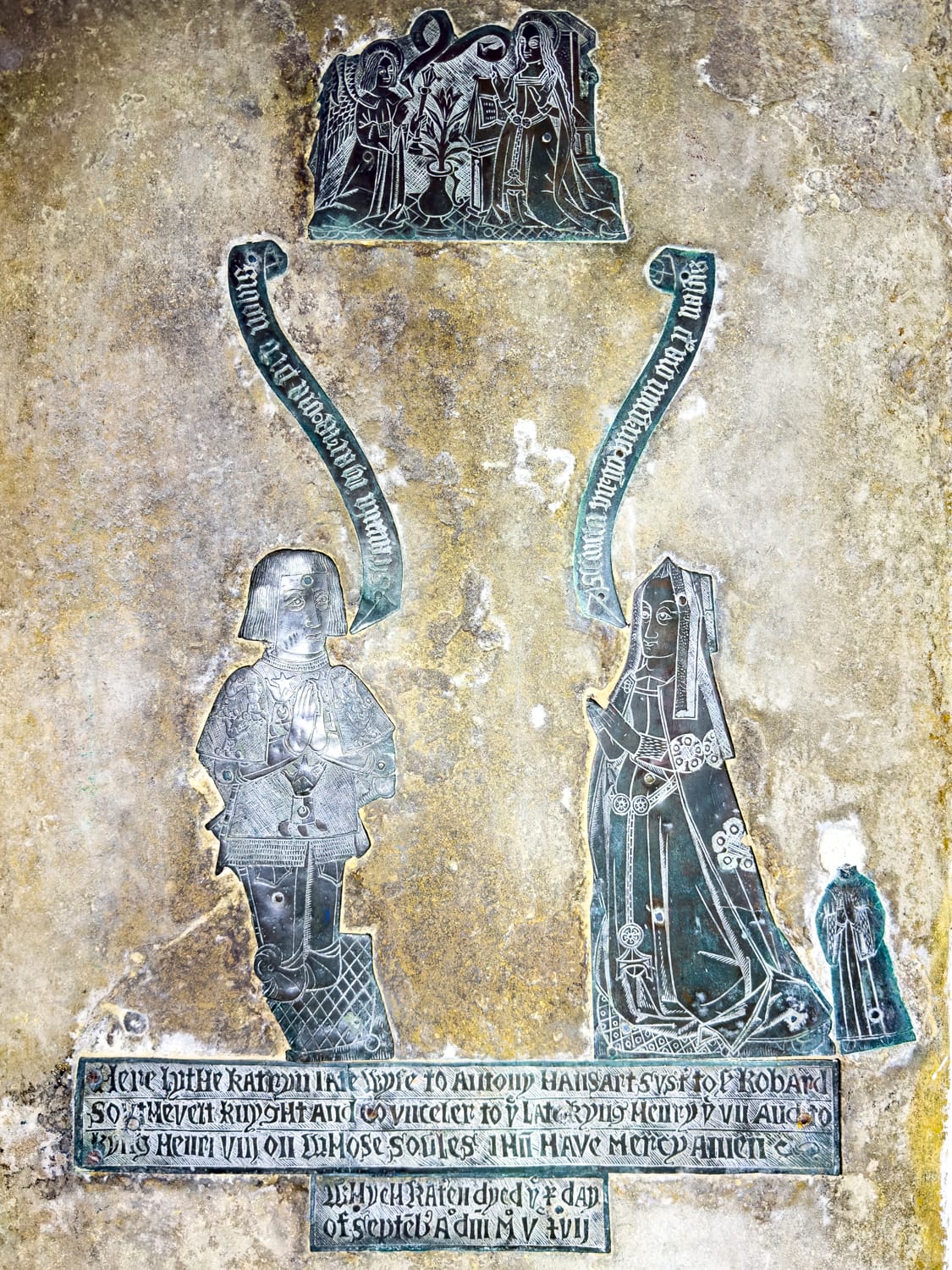
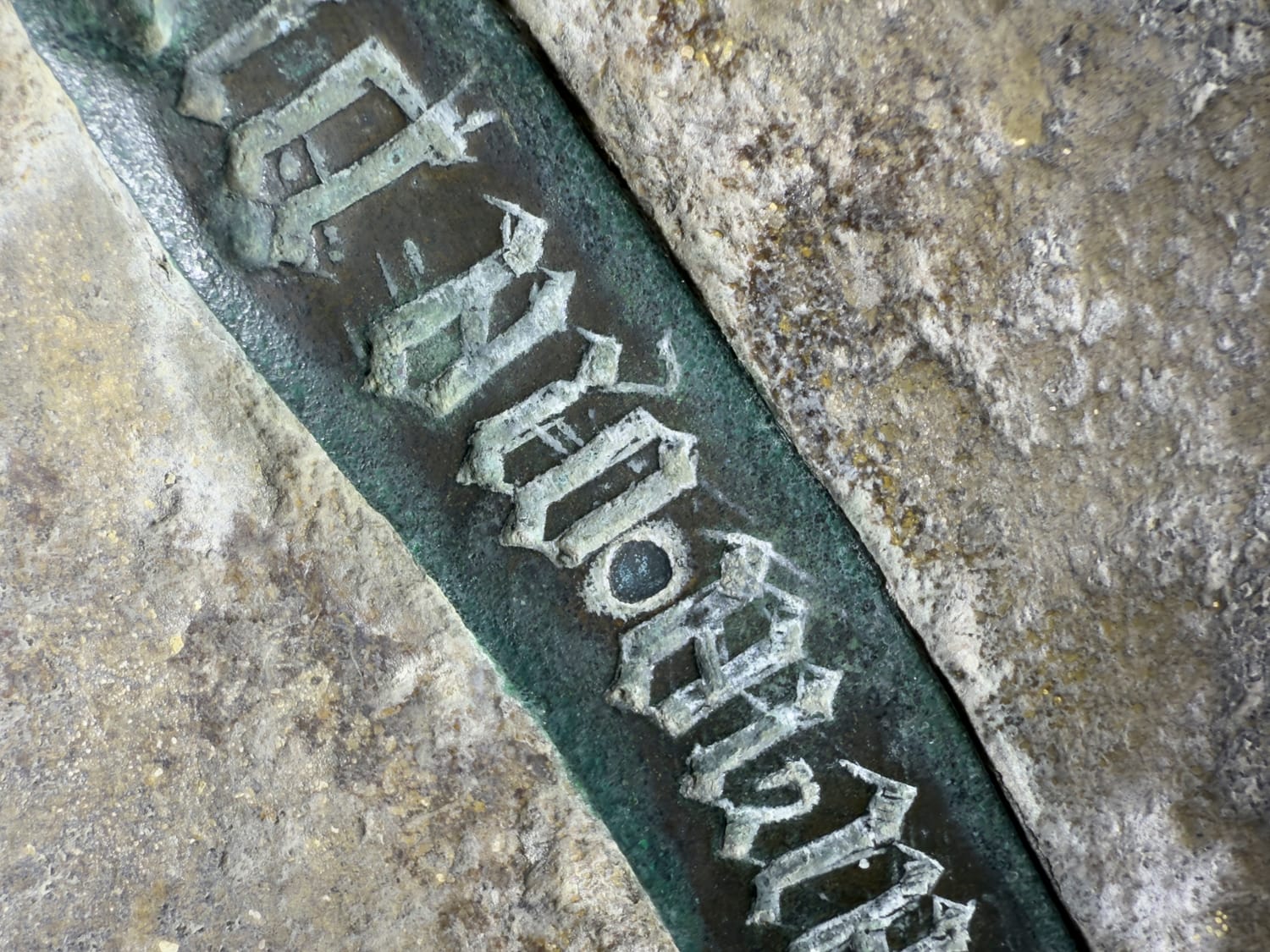
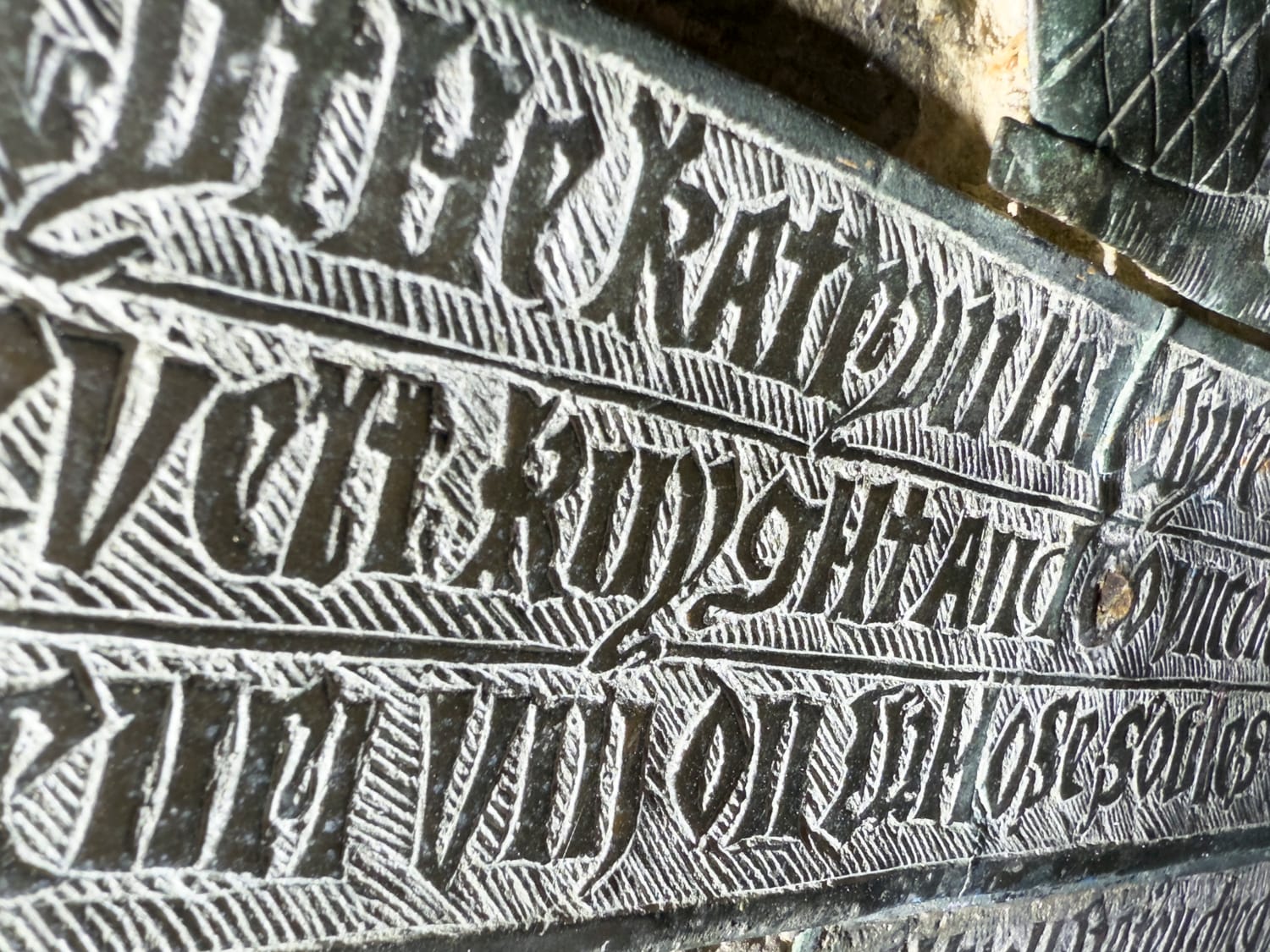
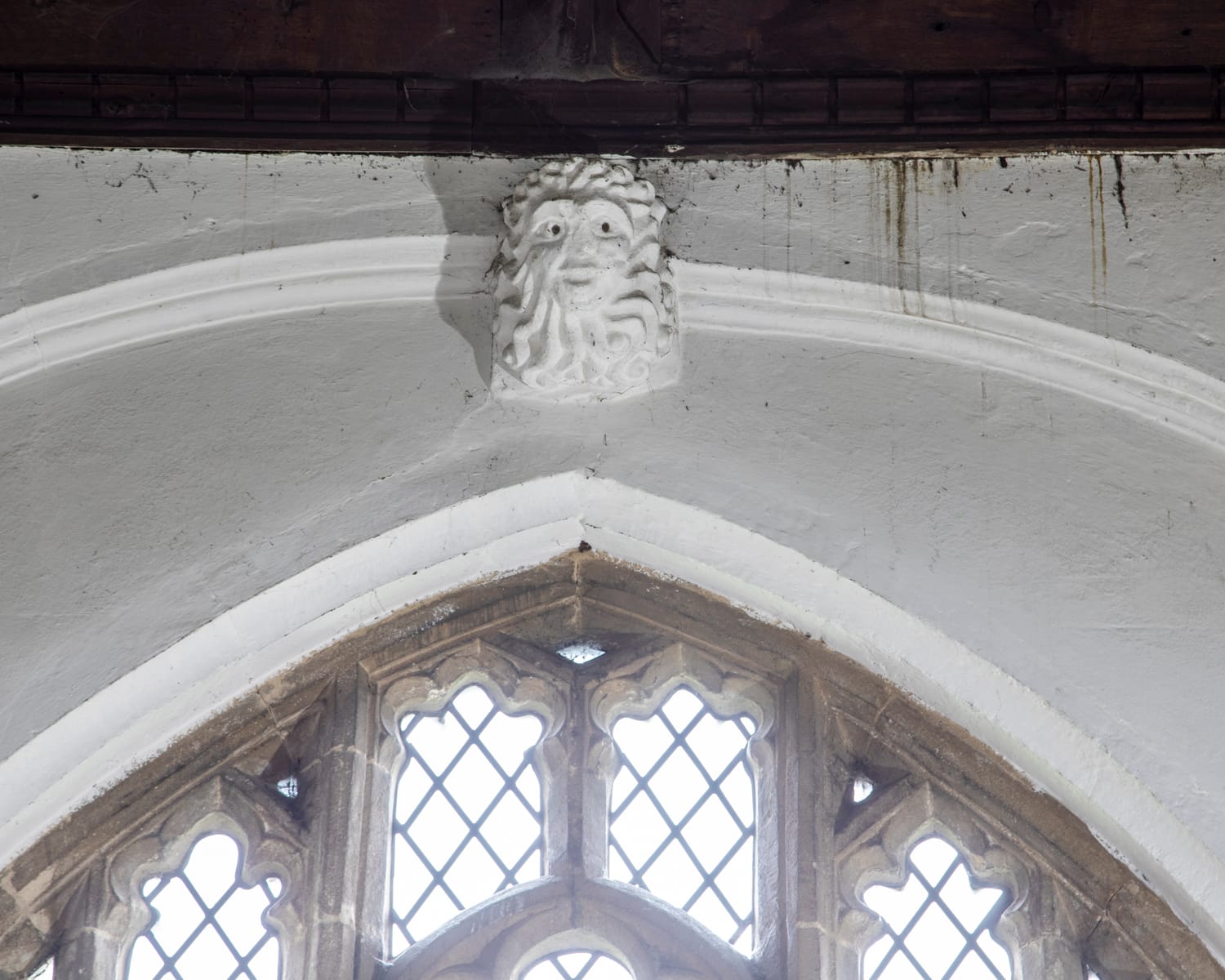
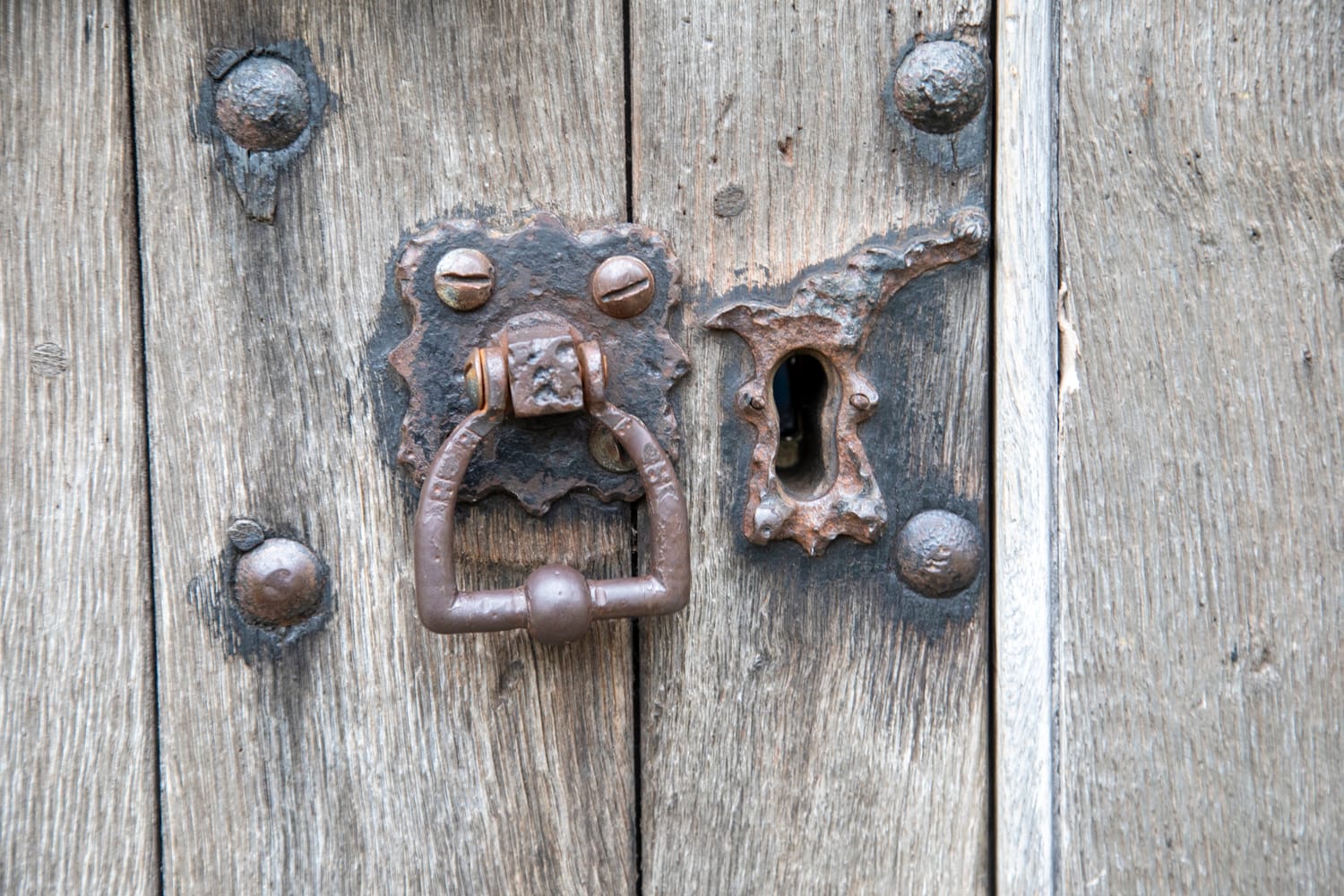
I was also struck by the flint work on the exterior of the clerestory. St. Wendreda is written within the walls and also some geometric symbols which remind me of the Alhambra in Spain.
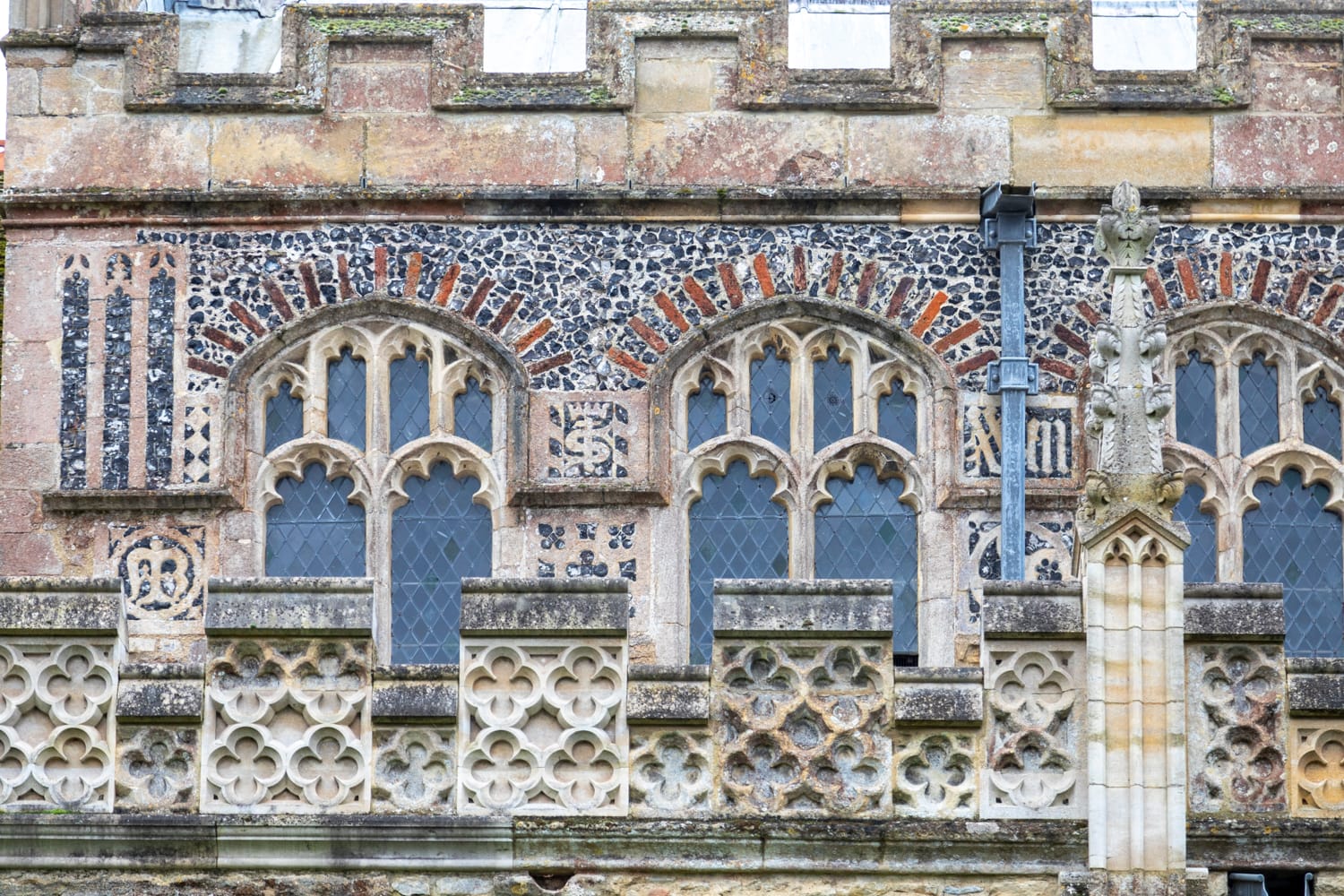
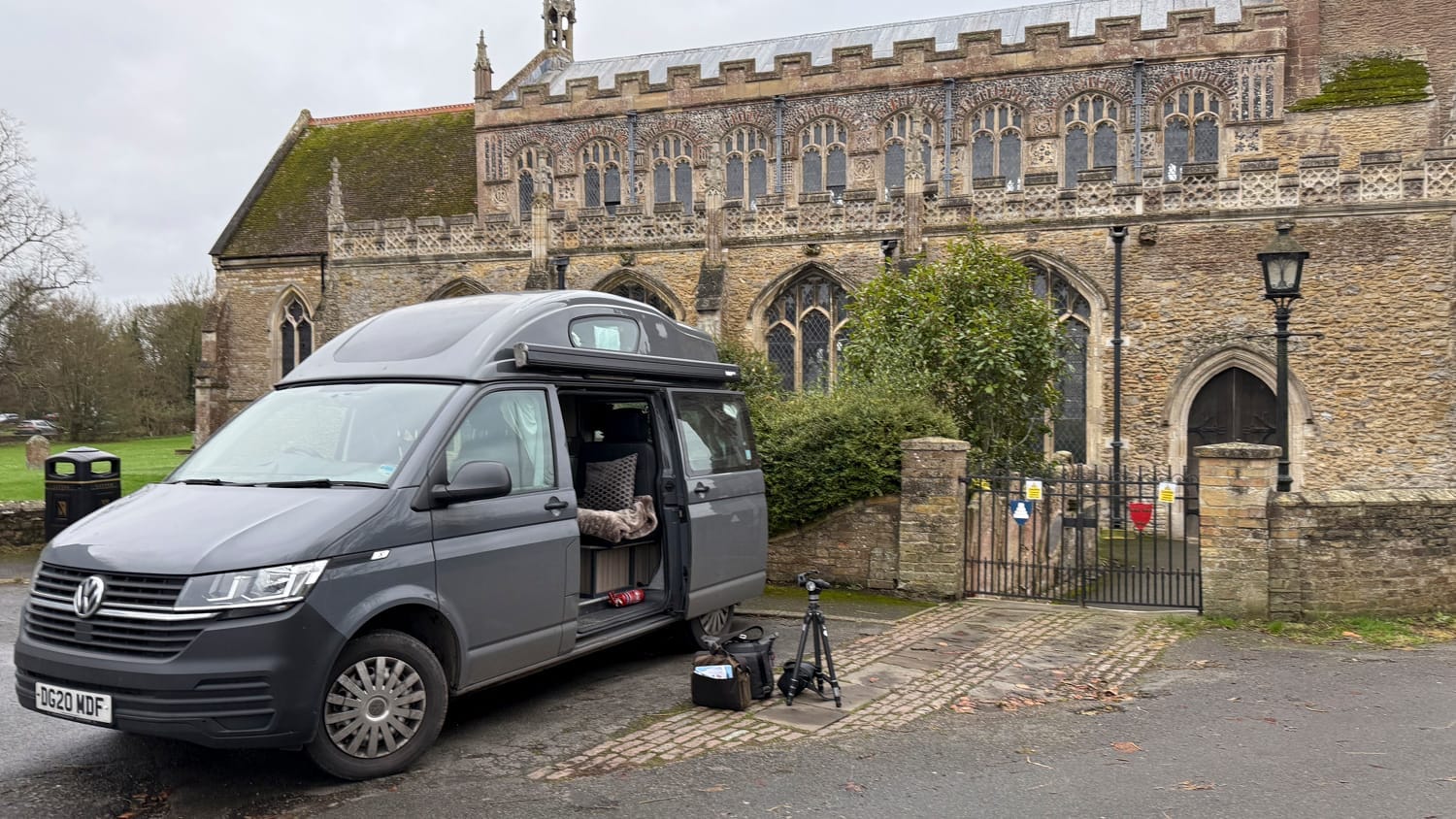
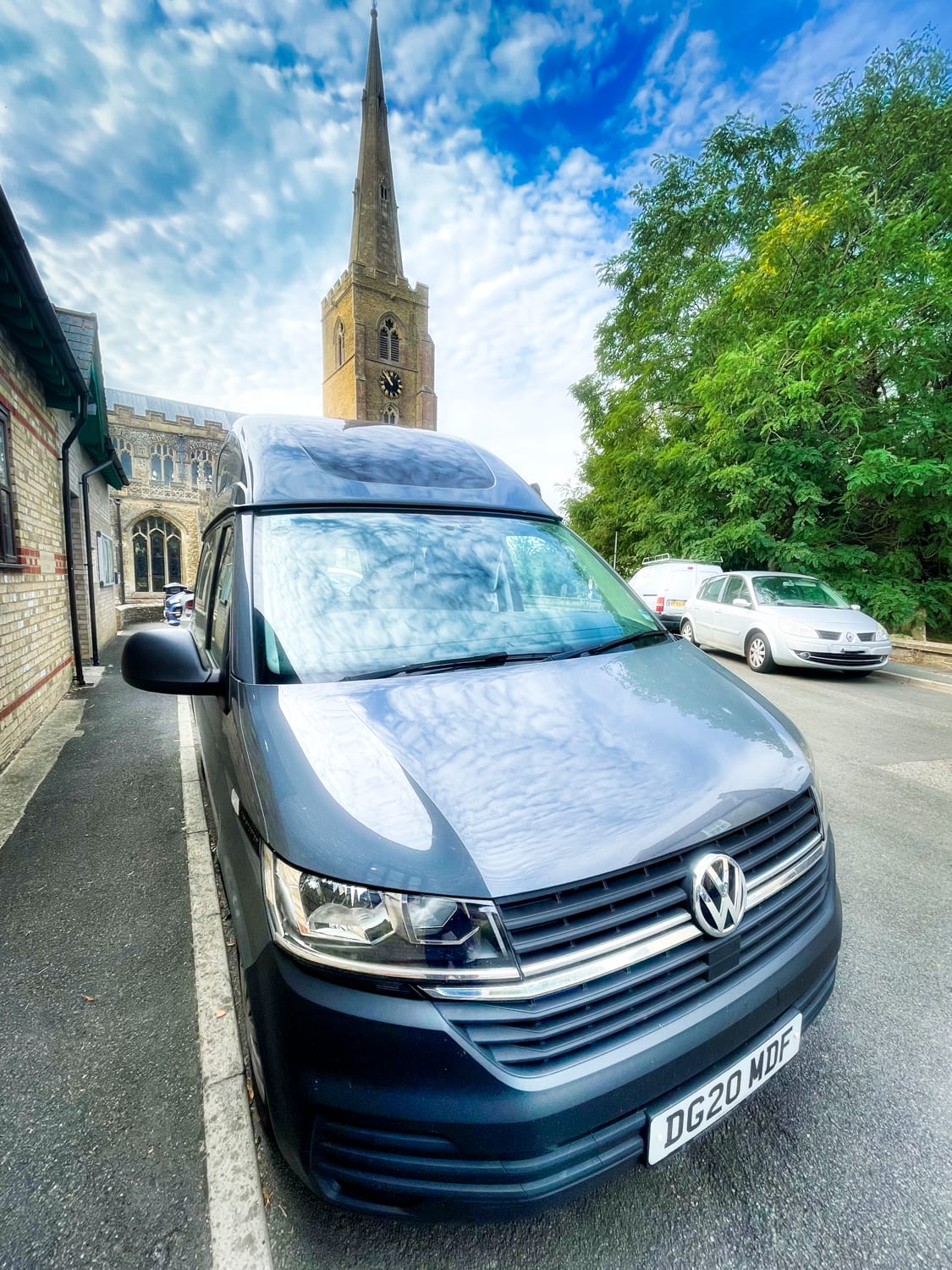
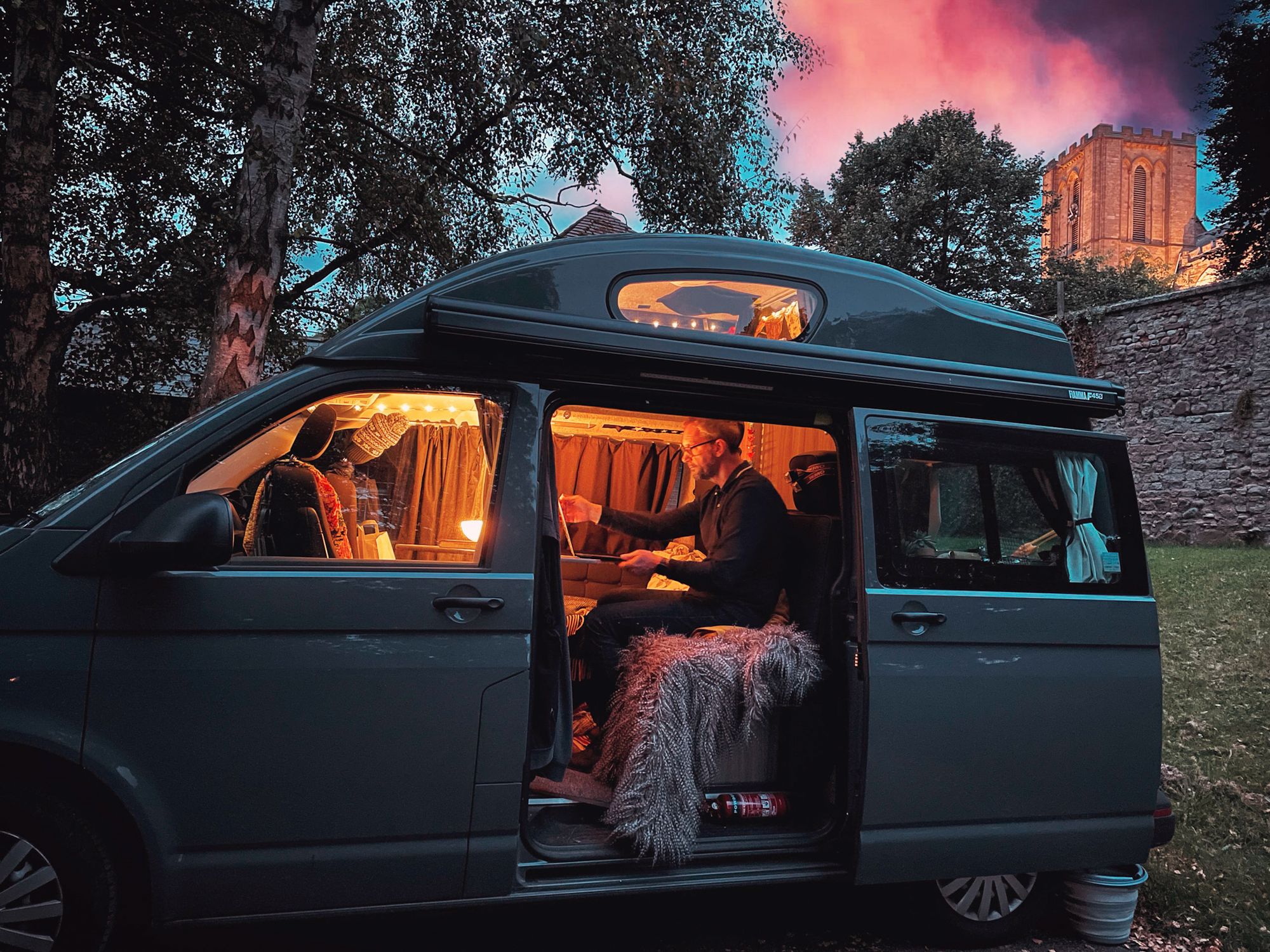
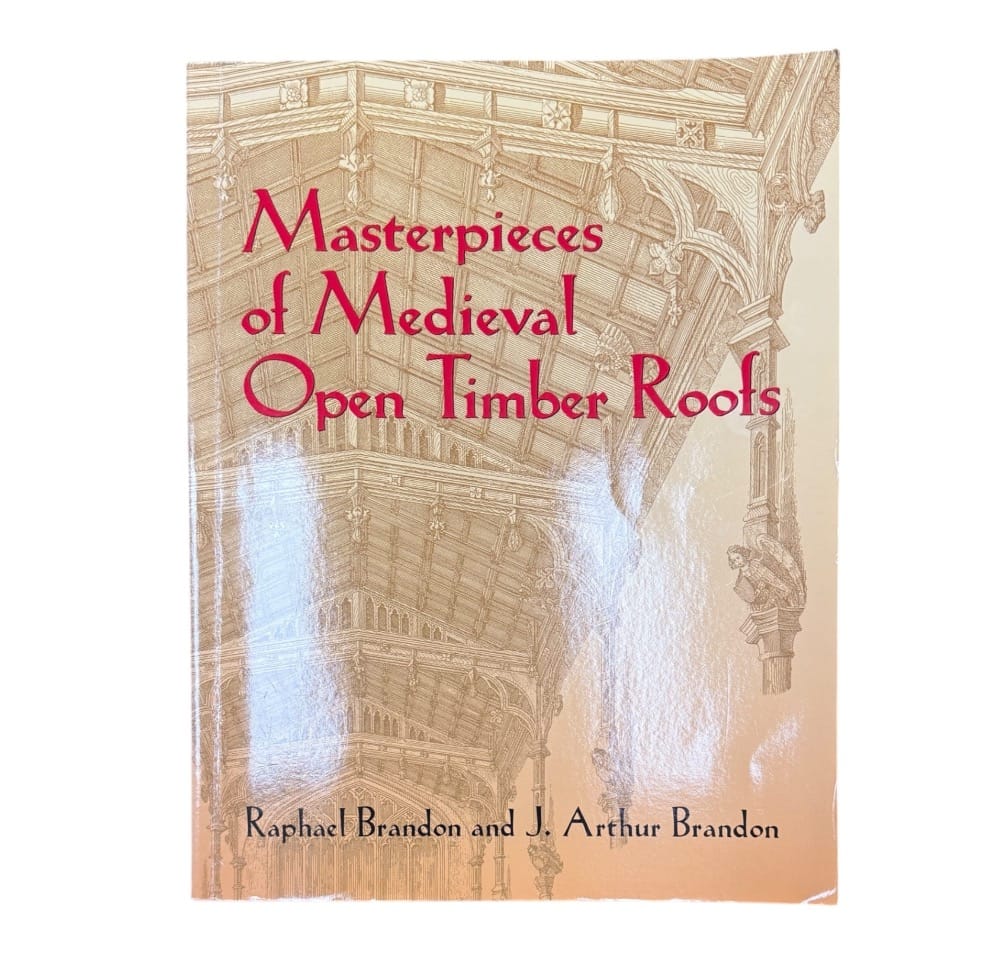
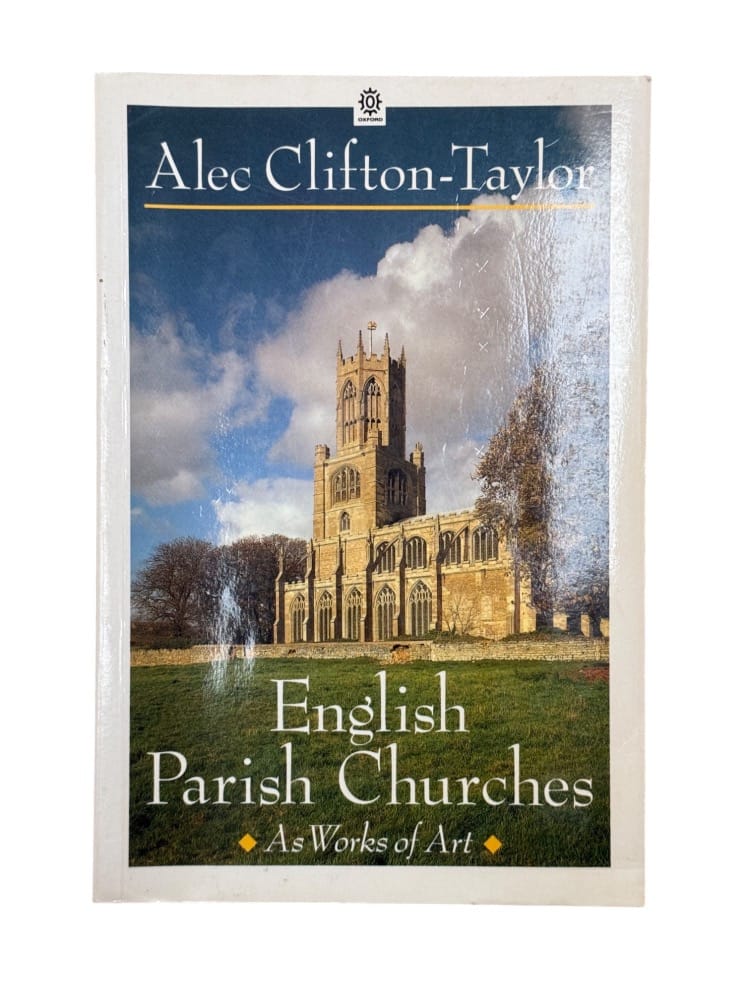
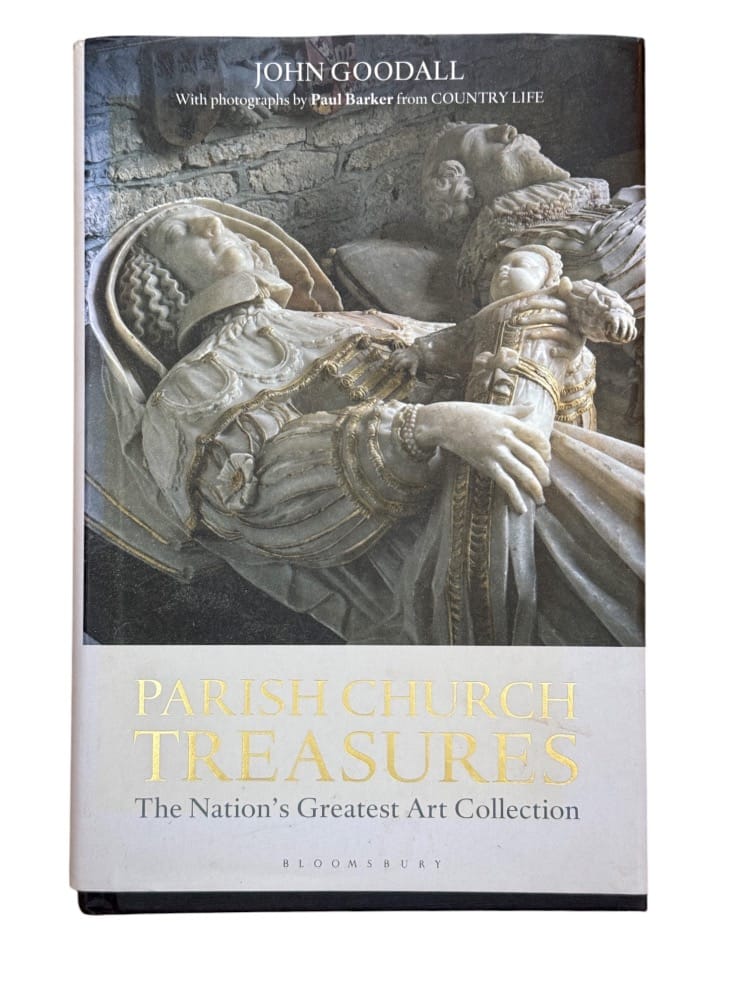
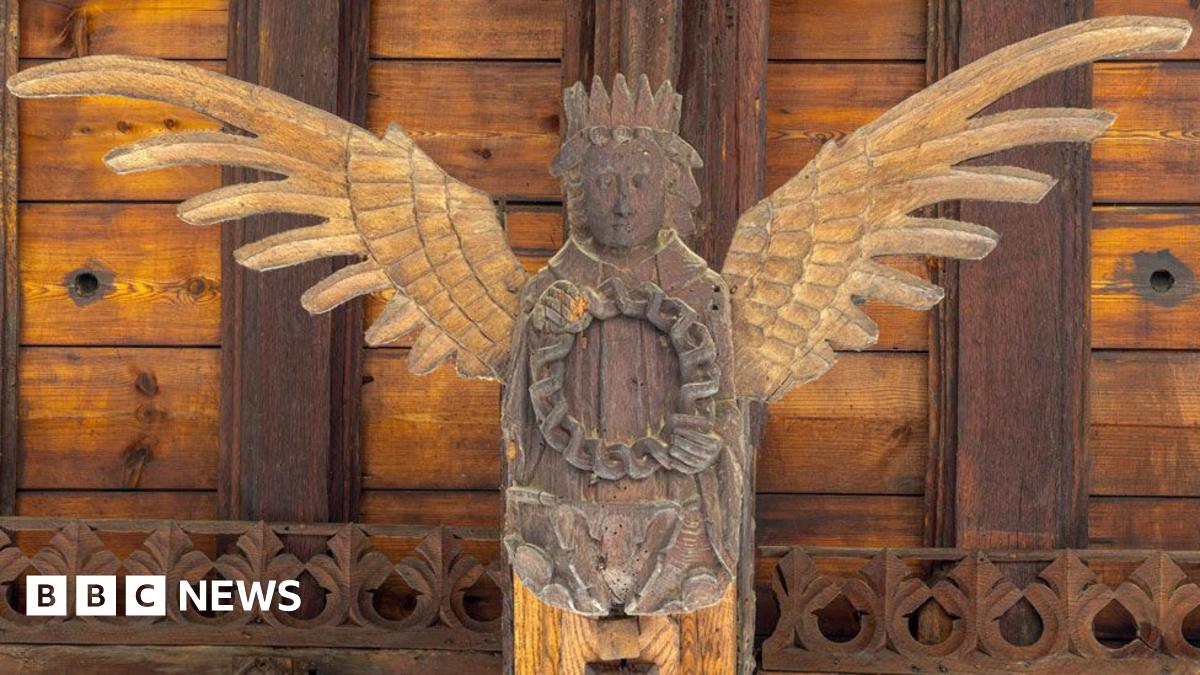
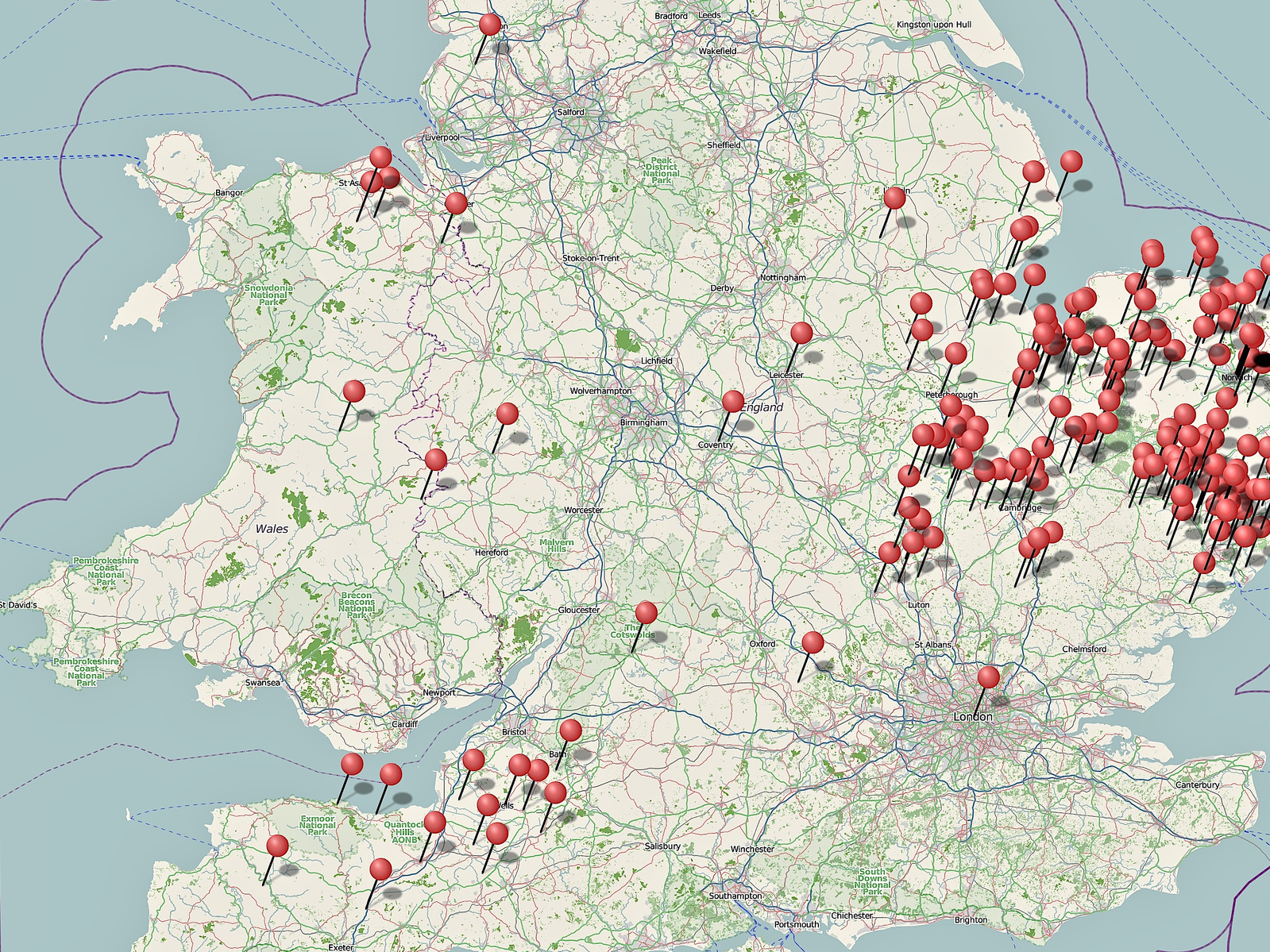
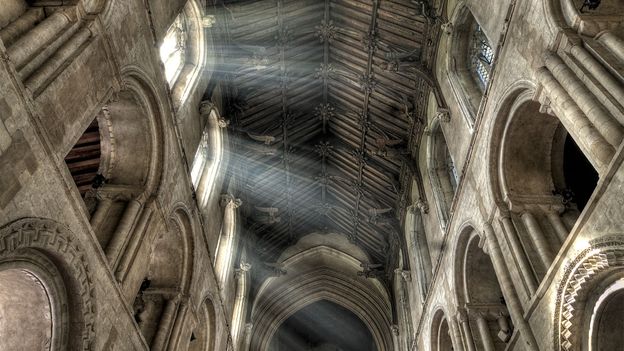
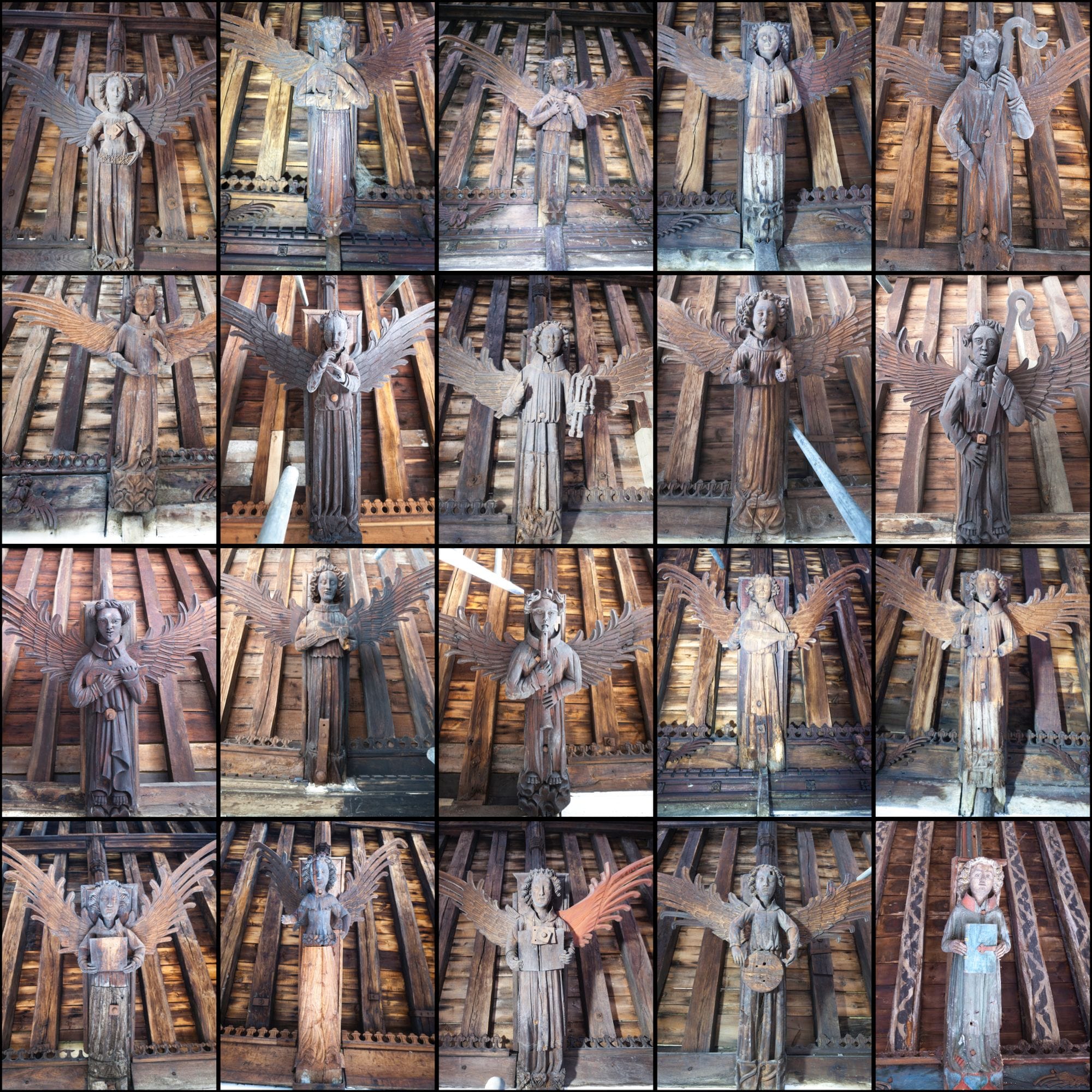
Every single hammer-beam was fashioned into life-sized angels. I spent two days there, mesmerised by their magnificence, carefully studying their form with fleshy nose against wooden cheek.
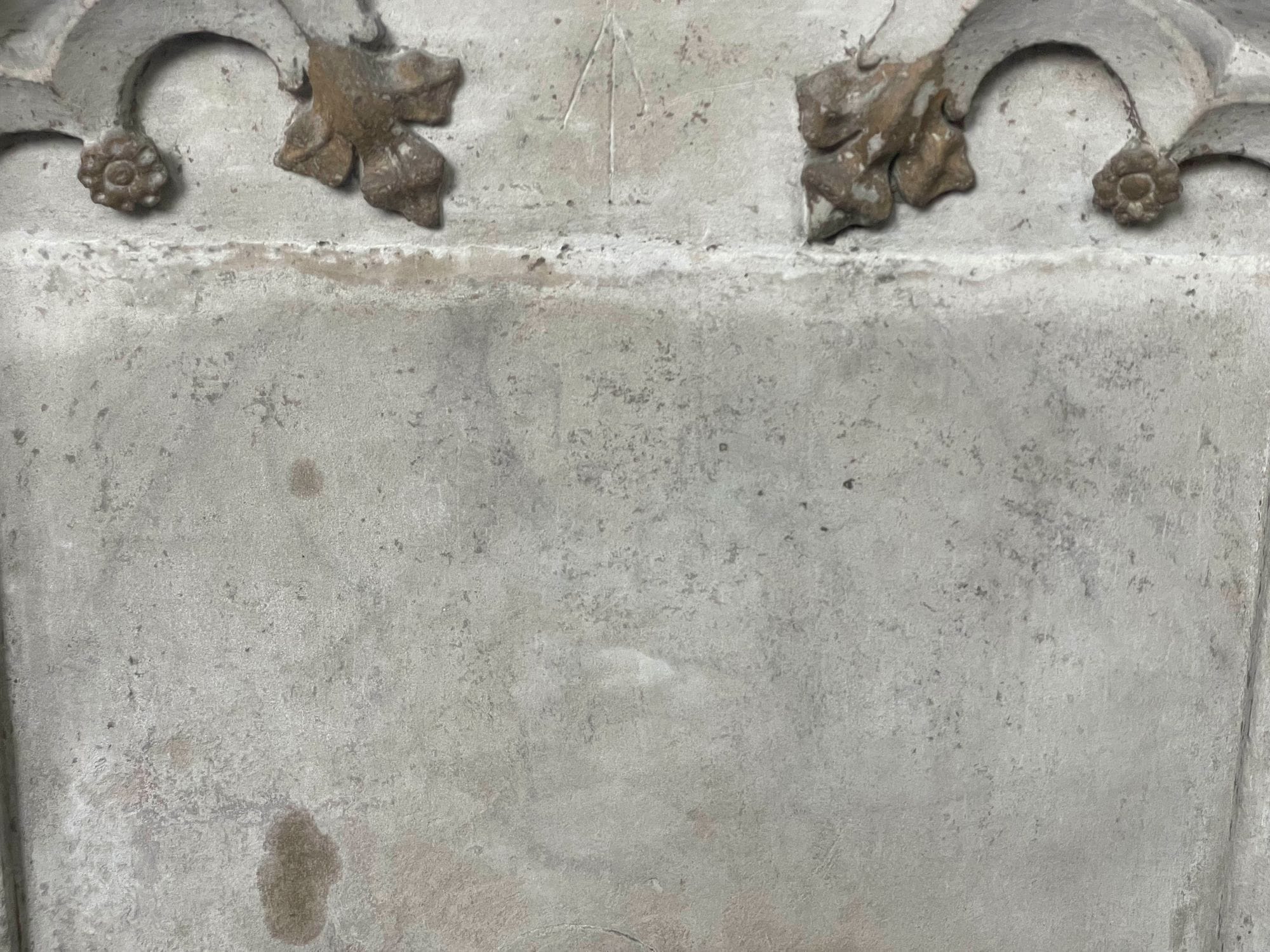
I'm quite a hardened church crawler, but I couldn't help but be moved at the sight of this ghost angel on the blind arcading in the Beauchamp Chapel in St. Mary's Warwick.
Treasure Hoard Entry: The Ghost Angel at Warwick
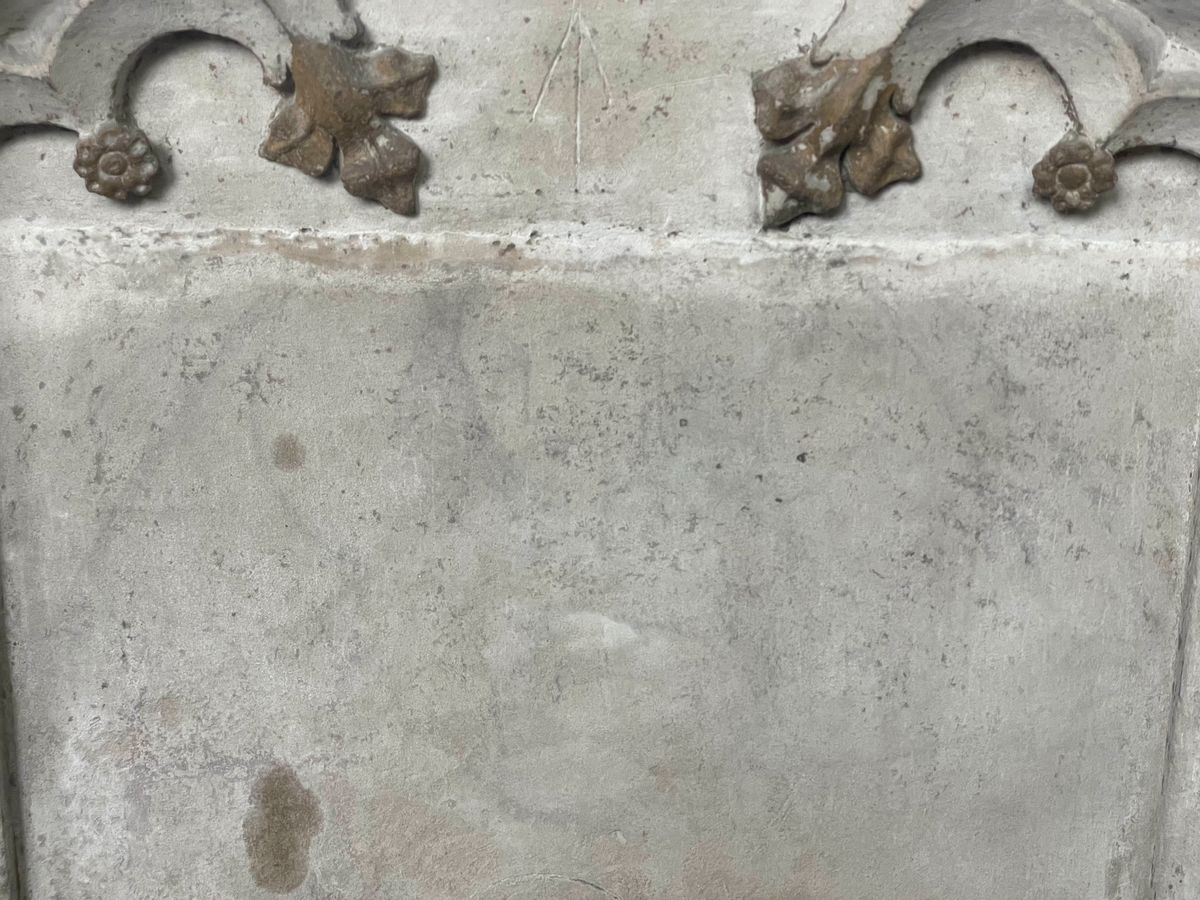
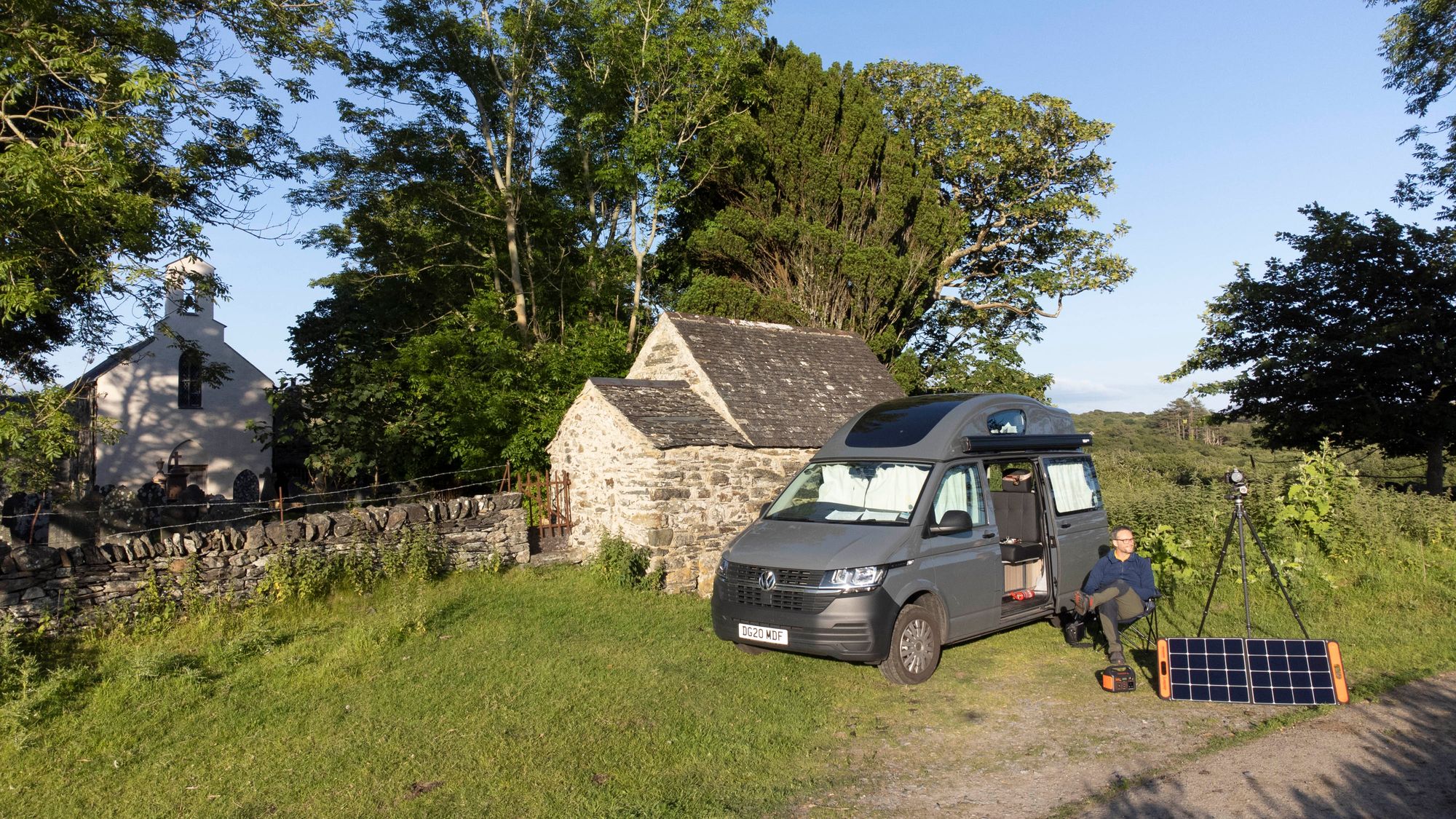
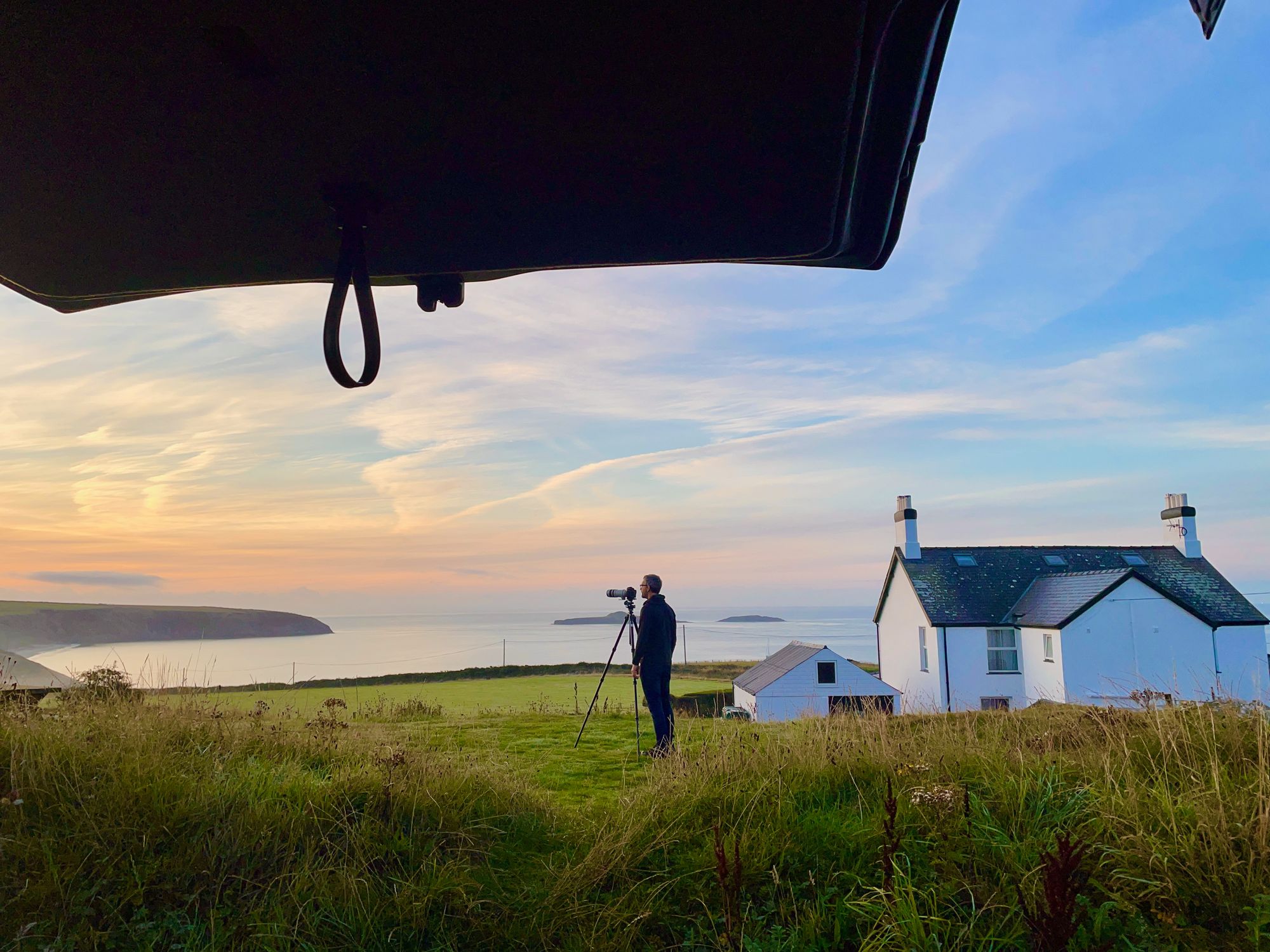
Recent Digest Sponsors:
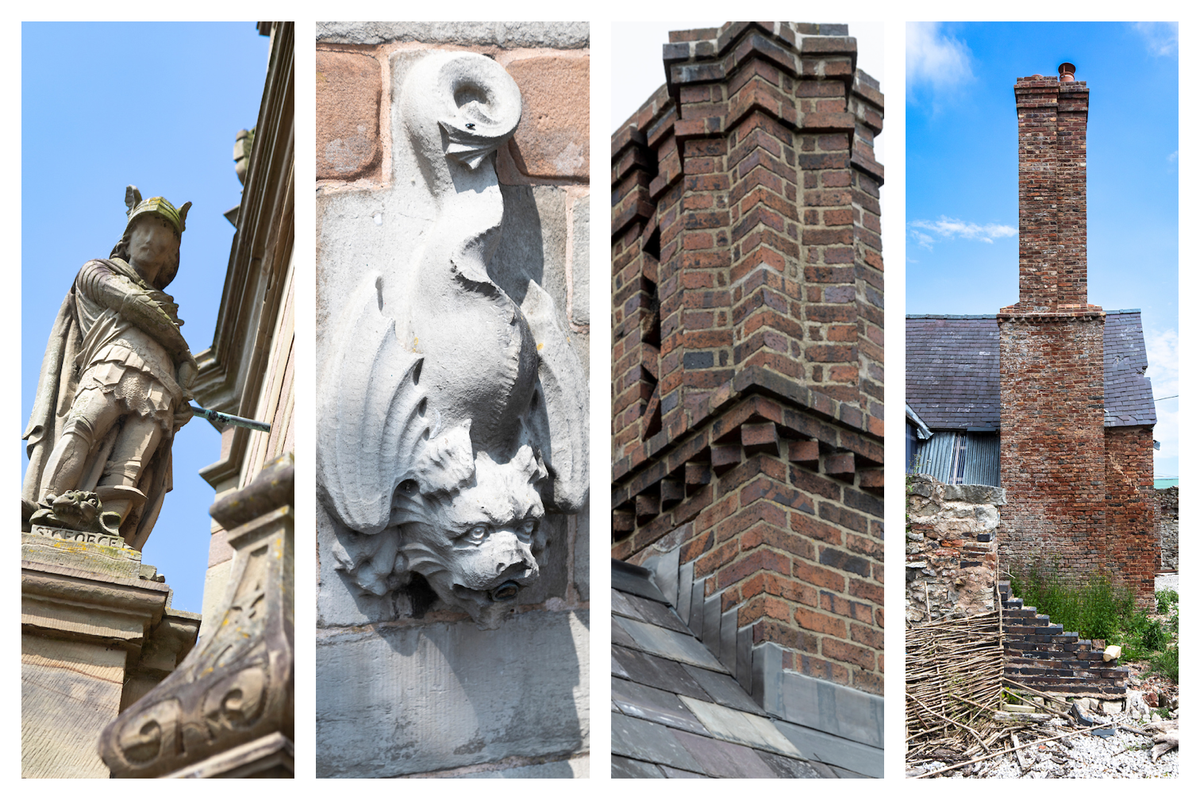
Member Powered Photography has allowed me to take professional photos of St Wen's at no cost to the church, and in return they have already started using them to help the appeal.
I'm so grateful to you all for your support.
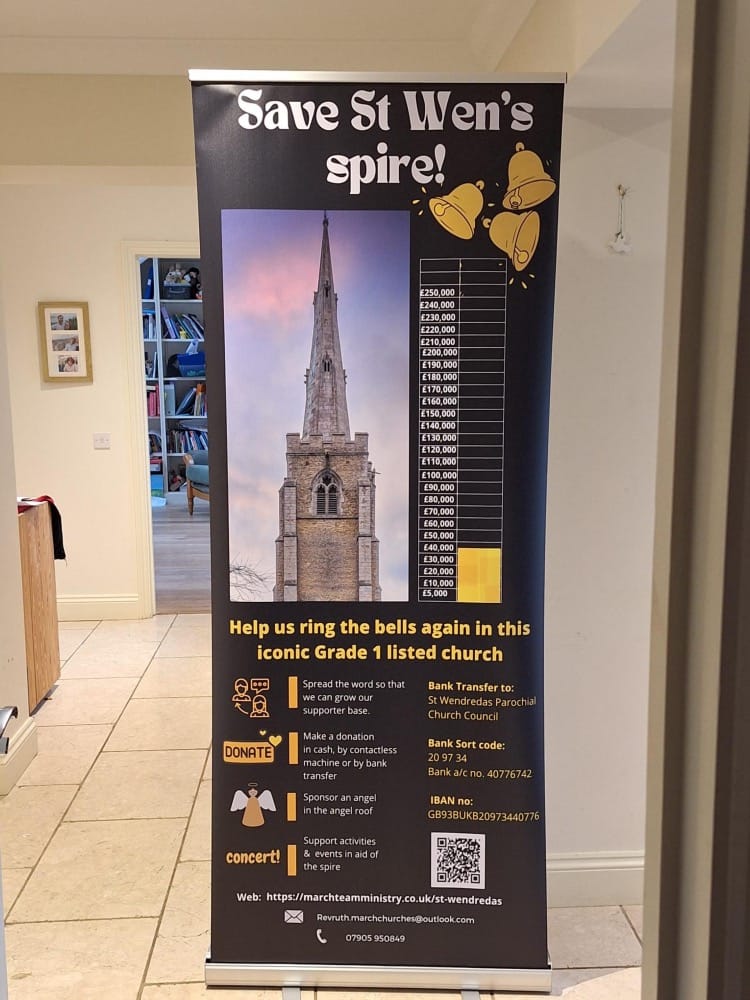
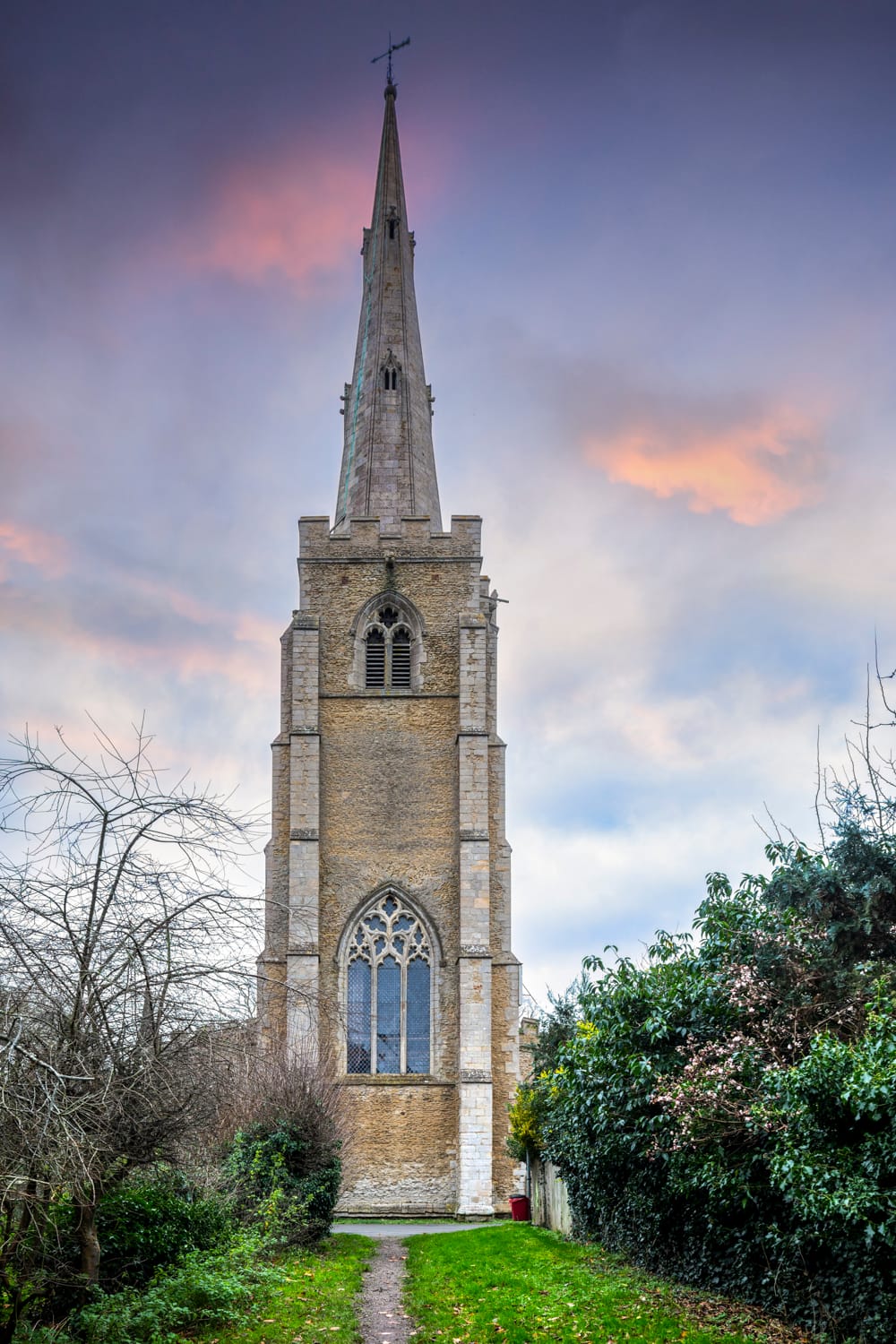
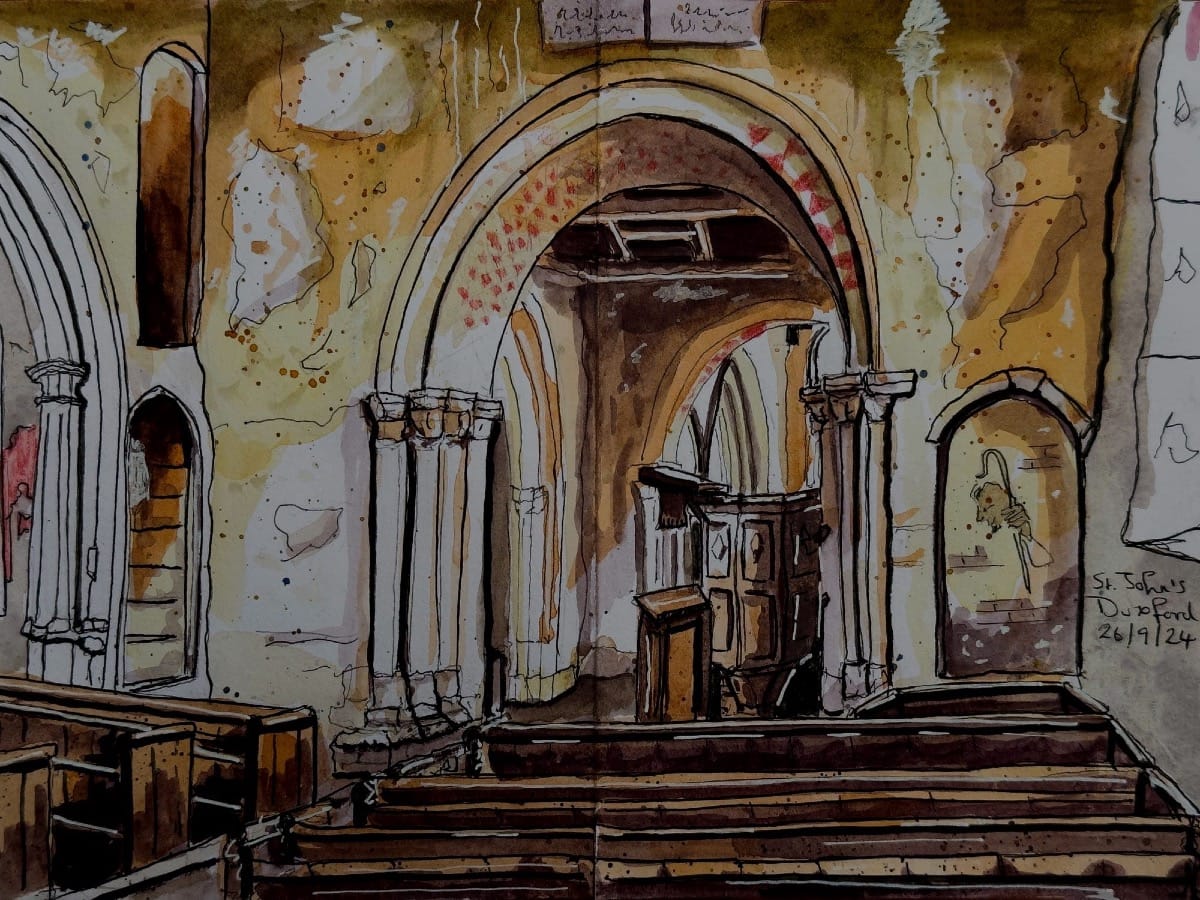
Atelier - My Art Shop
Visit My Art Shop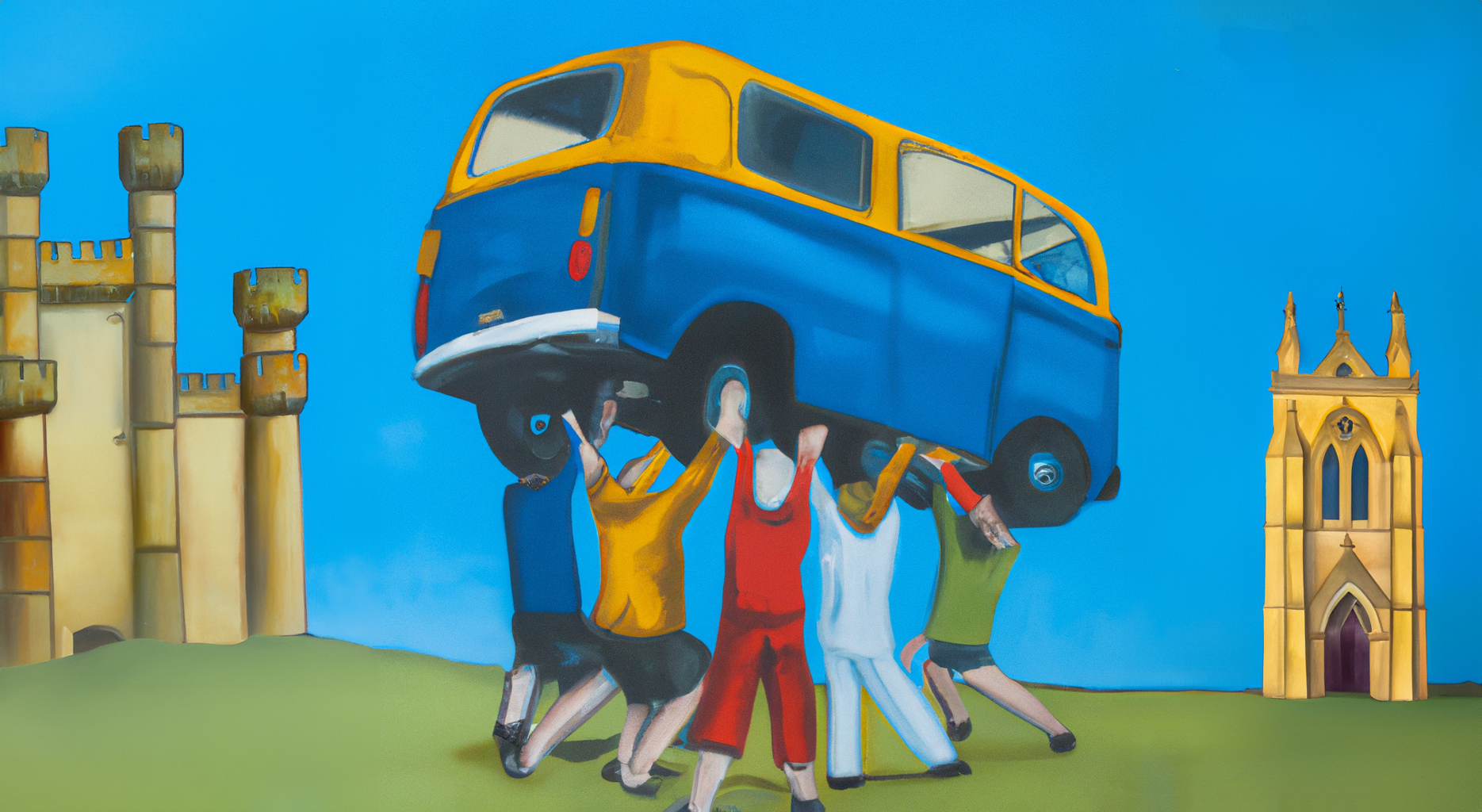
Do you know of a company or firm that might be able to sponsor the digest? Sponsorships are now going towards Member Powered Photography and recorded on the Donations Page.

Sponsor a Membership and get your own landing page on the Digest
More information here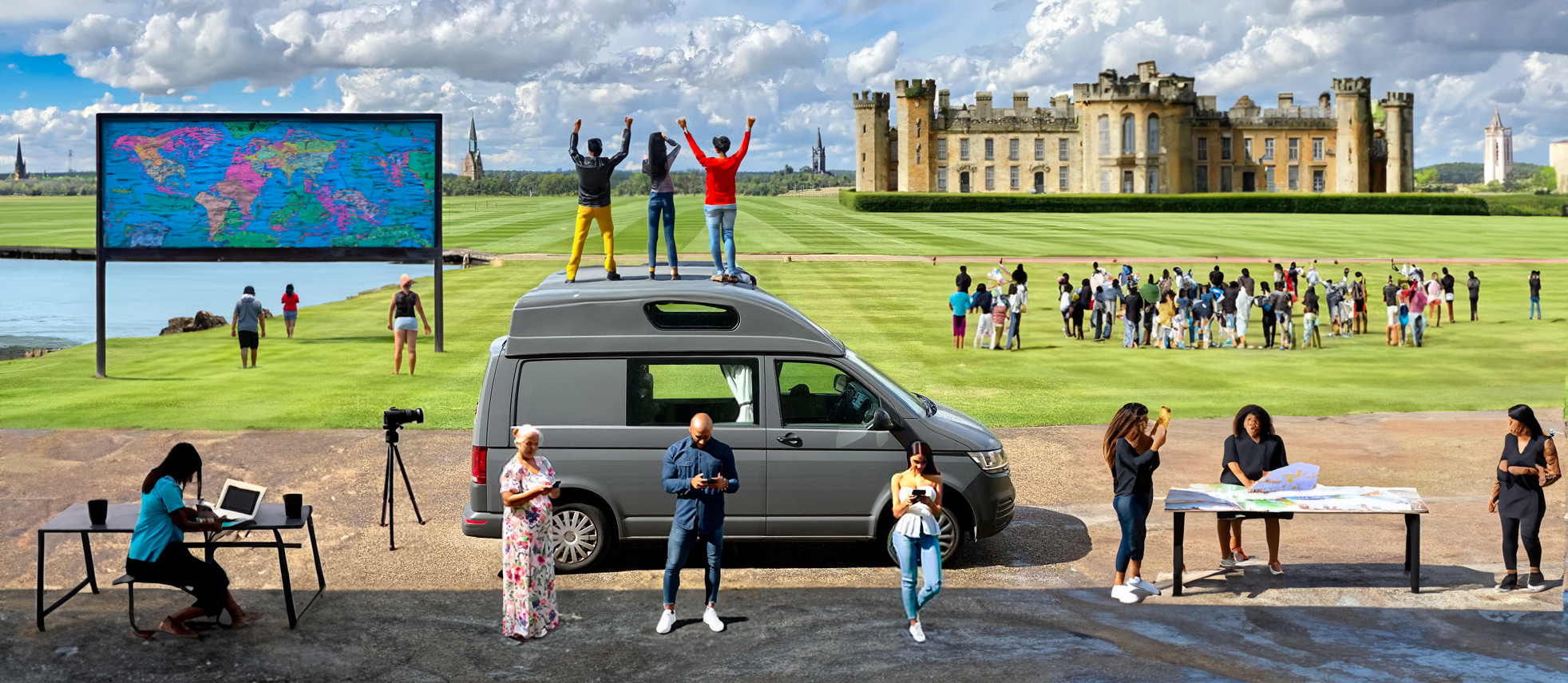
Thank You!
Photographs and words by Andy Marshall (unless otherwise stated). Most photographs are taken with Iphone 14 Pro and DJI Mini 3 Pro.
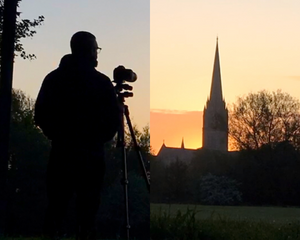
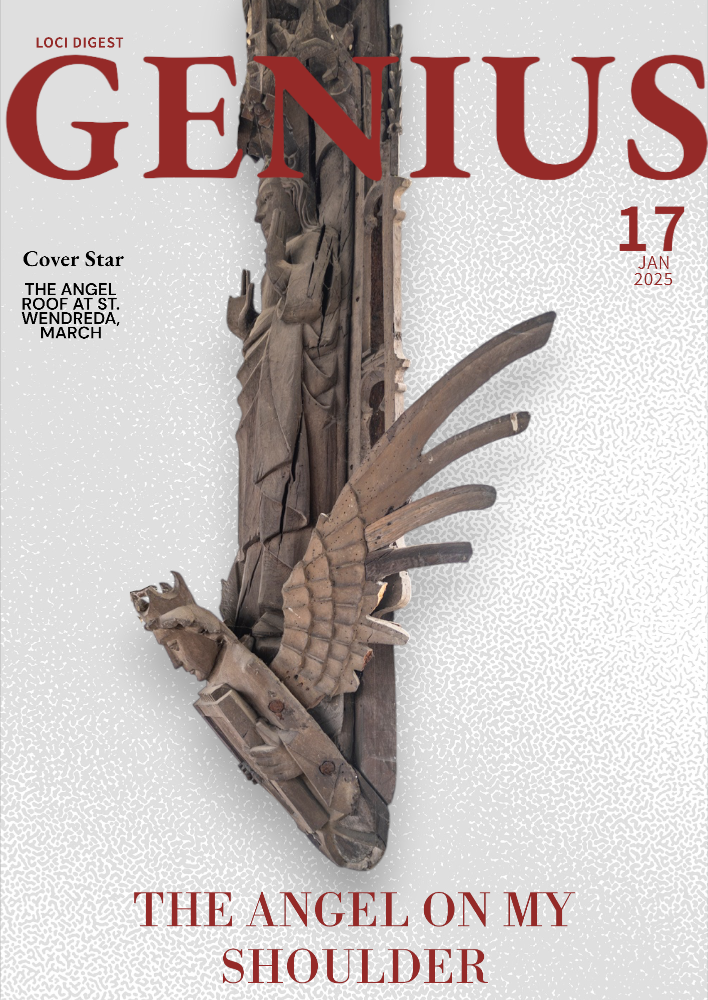

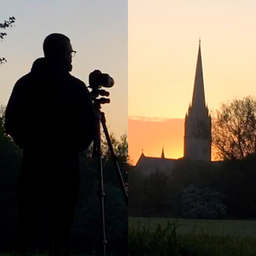
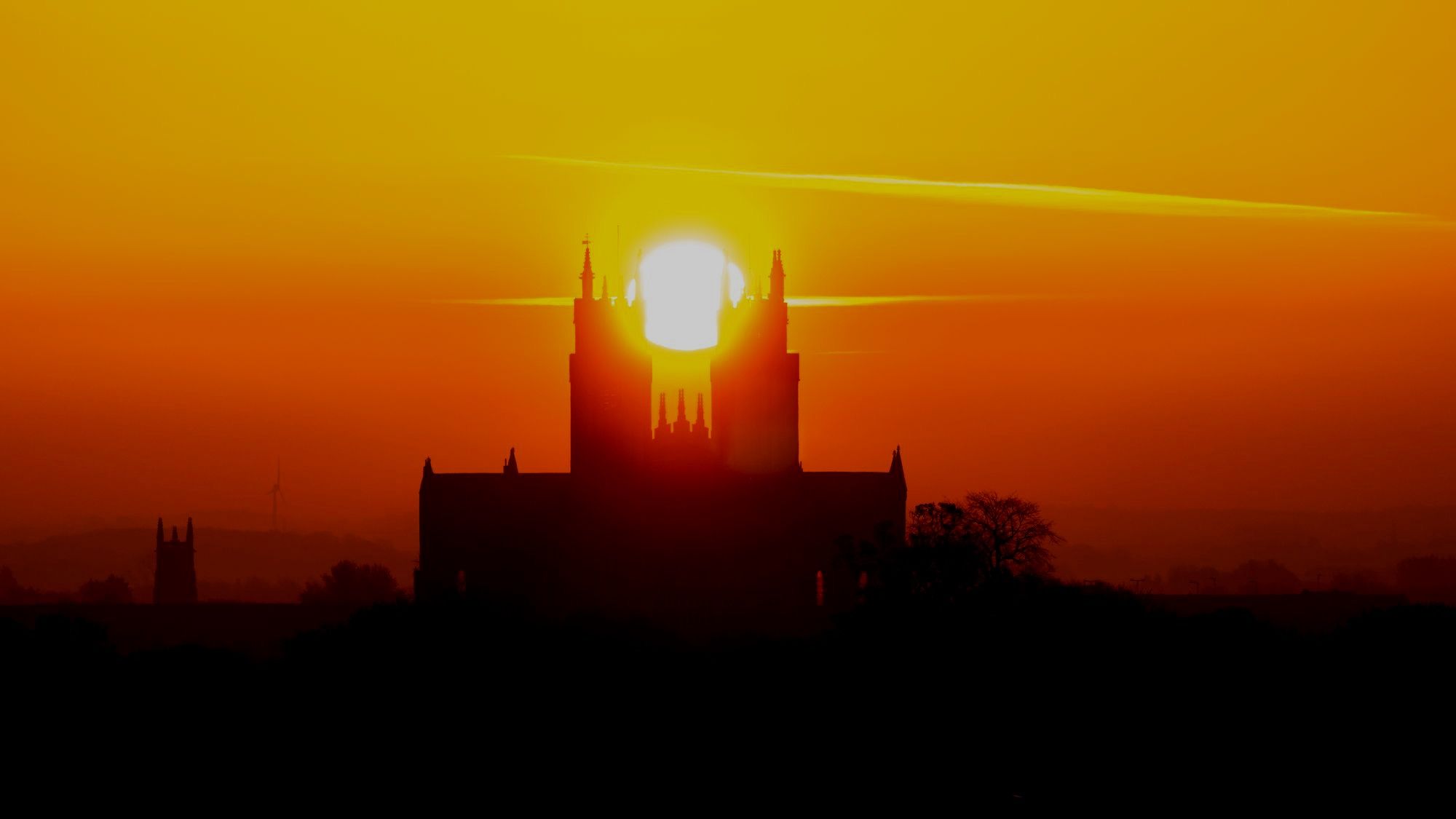
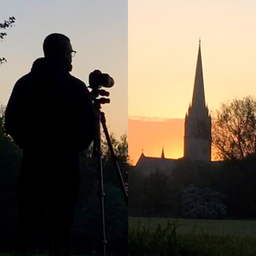
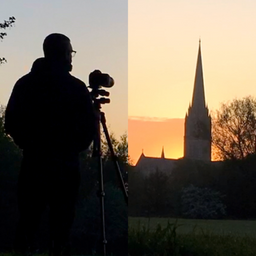

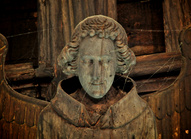

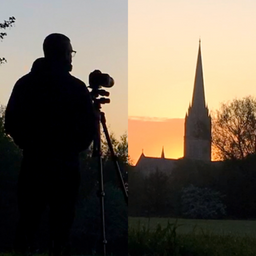
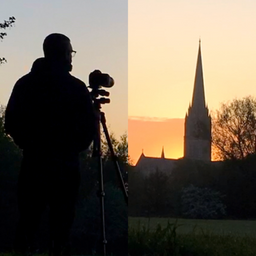





Member discussion